Lisbon Street Photography Workshop With The Fuji X Series
Street photography for me is one of the most trickiest aspects of photography to do well. It’s one of those things that seems so simple until you try to do it. The best street images create curiosity in the viewer, there’s the suggestion of a narrative; who is this person, what are they doing, etc, and also there’s a clarity and simplicity of composition that’s incredibly difficult to achieve when photographing complicated and dynamic city streets.
Earlier this month I ran a three day street photography workshop in Lisbon with Hugo from Fuji X Passion, and with the clients who came over to spend a weekend with us we wanted to concentrate on this simplicity while wandering the streets of this bustling city and it’s labyrinthine old neighbourhoods. After we’d got everyone checked into the hotel, we headed into one of my favourite old quarters around the Bica funicular. Unfortunately we arrived a little late in the day and the entire street was completely in shadow, but we still played around with shooting the tram and some of the people waiting on the street before the bars opened up. Heading up the steps towards the Miradouro Santa Catarina we could see that the low sun was illuminating the park in beautiful golden light, however in places like this the sheer volume of people can sometimes make it tricky to see what to shoot. The aim is to find clean compositions amidst all the visual chaos which can take some time to see. I love backlit subjects, but the problem with silhouettes is that if not carefully composed they can all blend together into a blocky mess and finding clearly defined shapes that don’t merge into the background or other figures can be quite challenging. One trick here is to shoot from a very low angle which puts the subject against the sky, so when I saw this young boy with a hula hoop and a fan I got as close as I could with a wide angle lens, lowered the camera almost to the floor and, using the articulating screen to compose, tried to capture the moment.
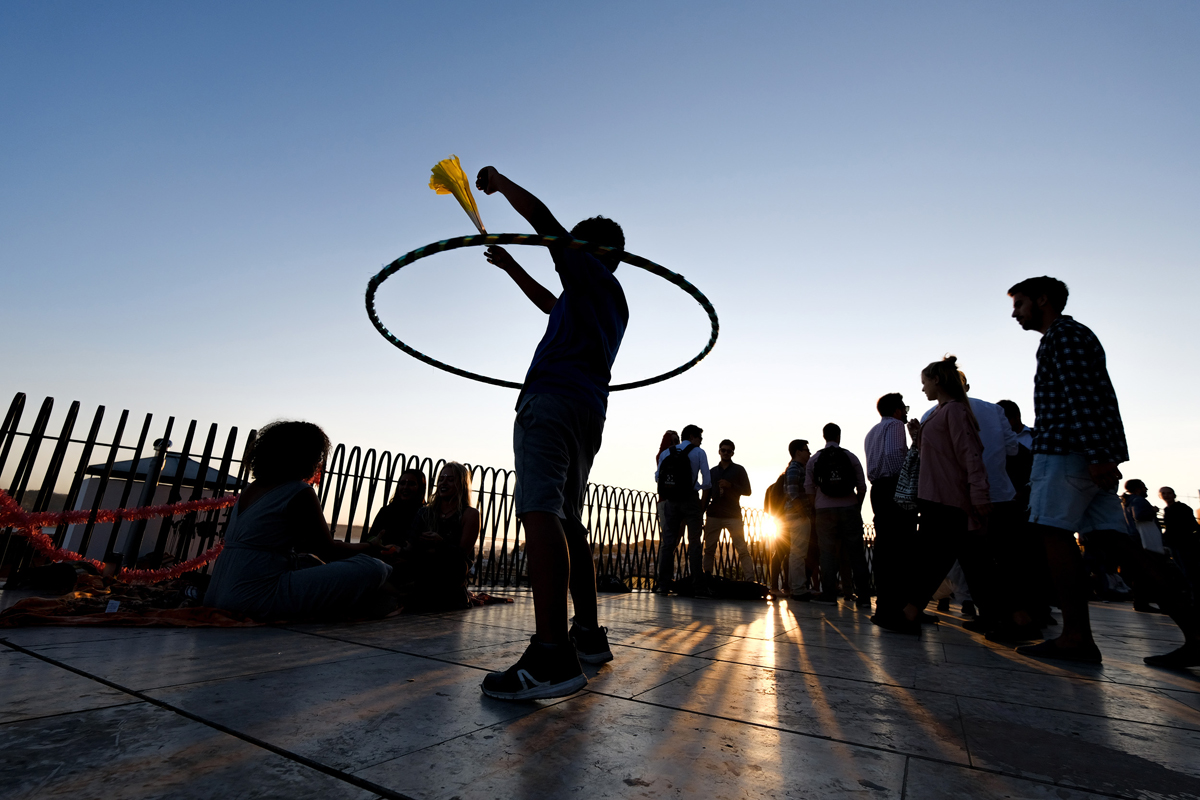
After a great meal nearby we headed home for the night and met at the hotel the next morning before heading to the old district of Alfama to do some more shooting. Before heading out that day we’d made a small presentation outlining the different approaches to street photography; from finding an interesting spot and waiting for someone to pass through the image, to capturing spontaneous scenes as they happened. As always, the aim was to create clean compositions, scan the edge of the frame and ensure that nothing extraneous was included in the image. Using lines to lead the eye through the image, using shadow areas to create negative space and frame the image. Our eyes tend to move towards light so it’s not a good idea to have bright areas on the edge of the frame away from the main focal point.
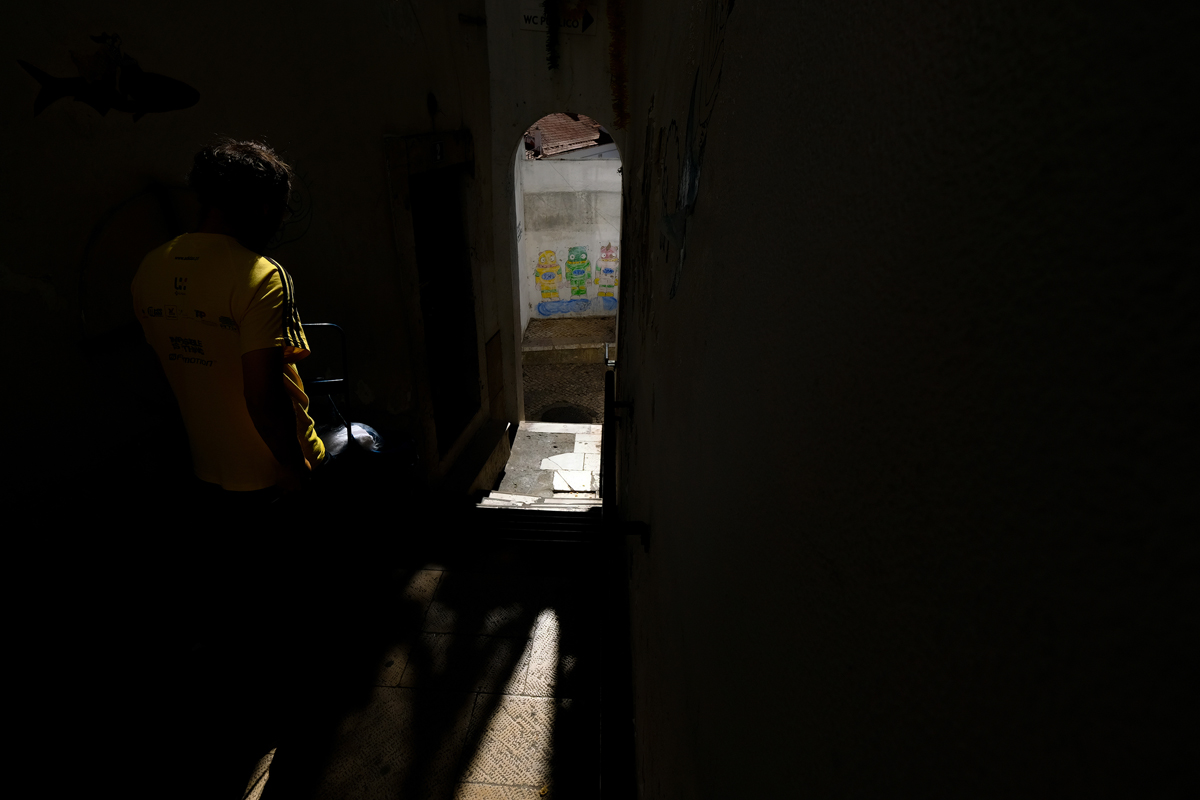
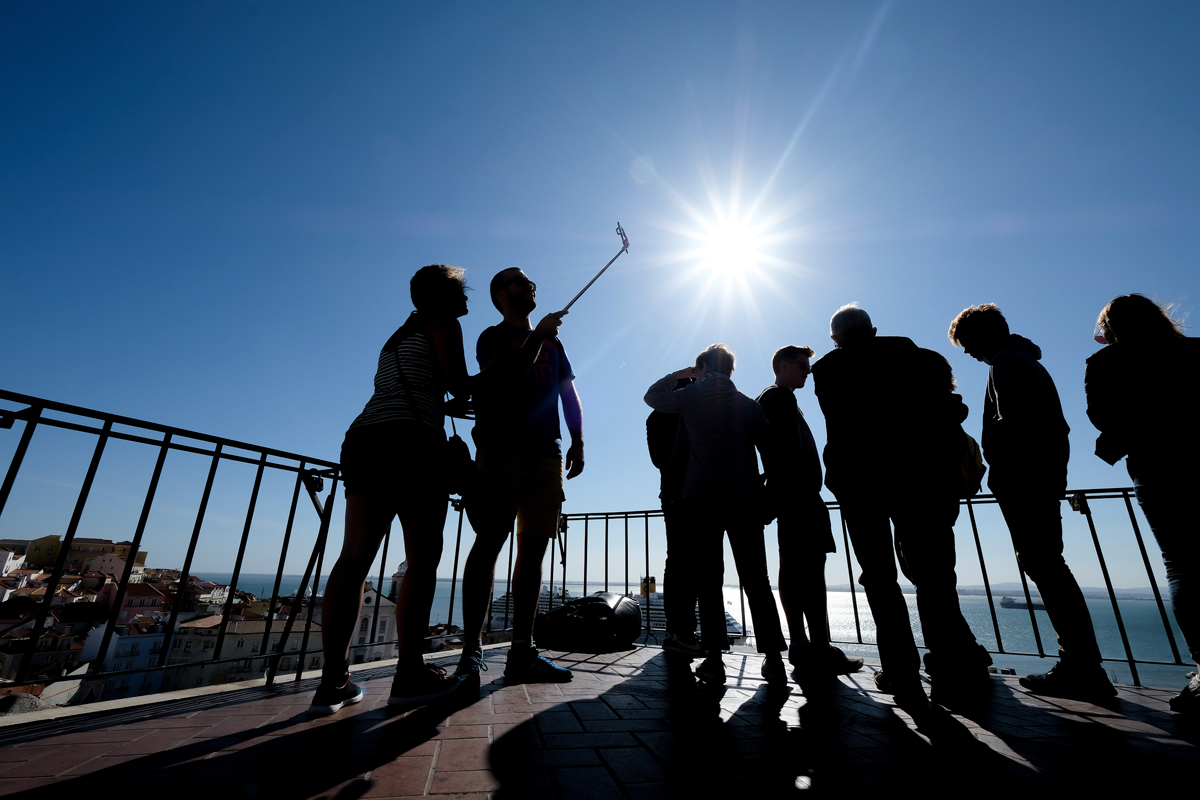
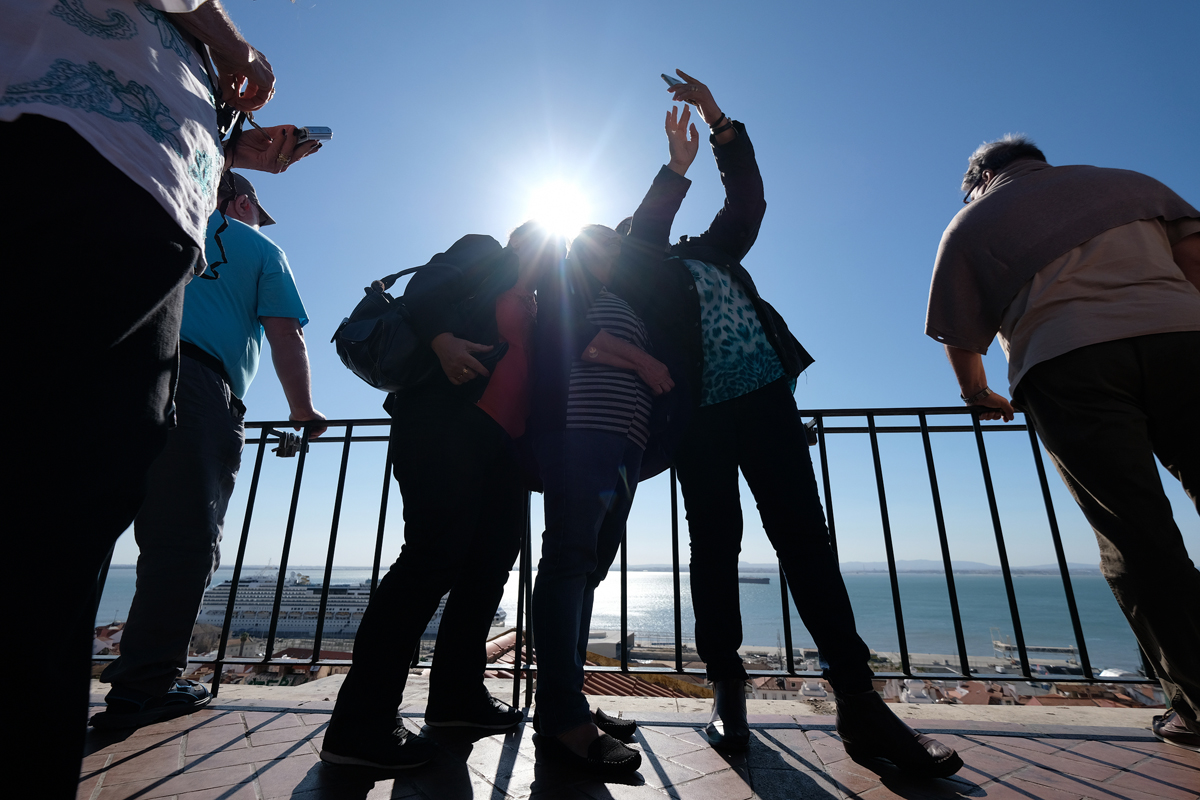
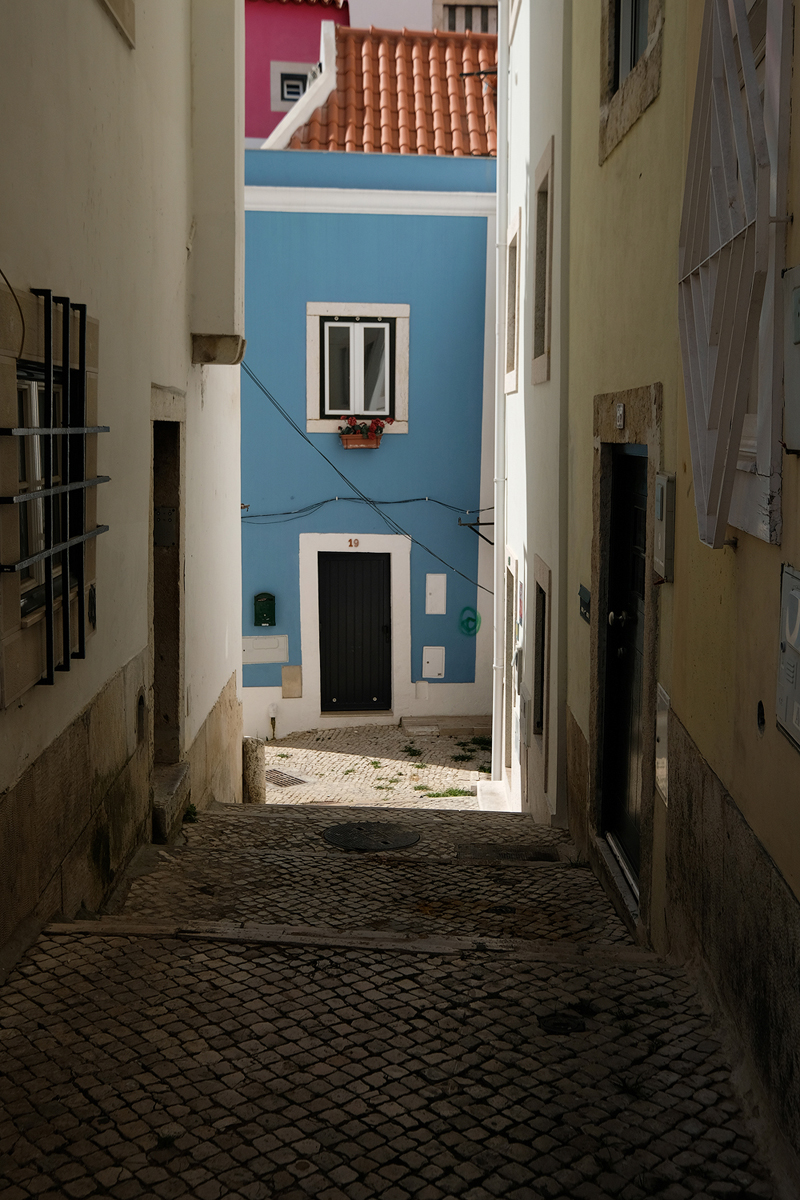
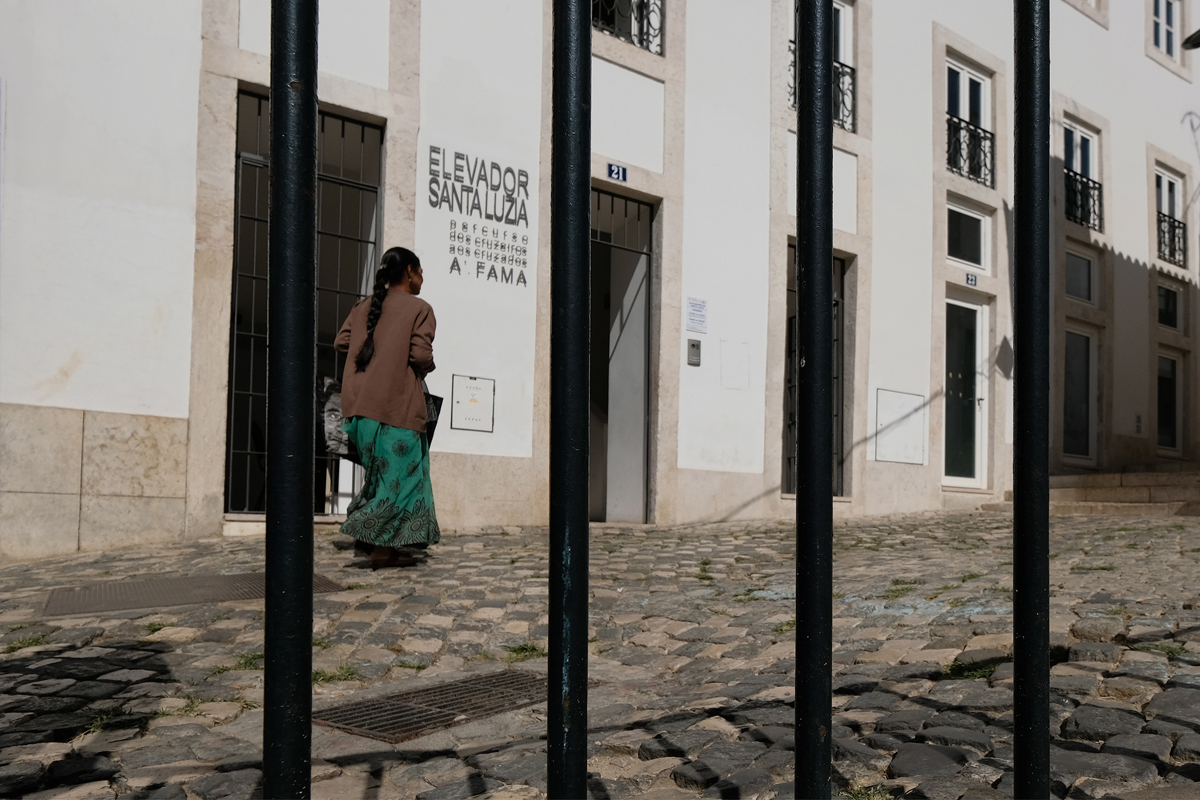


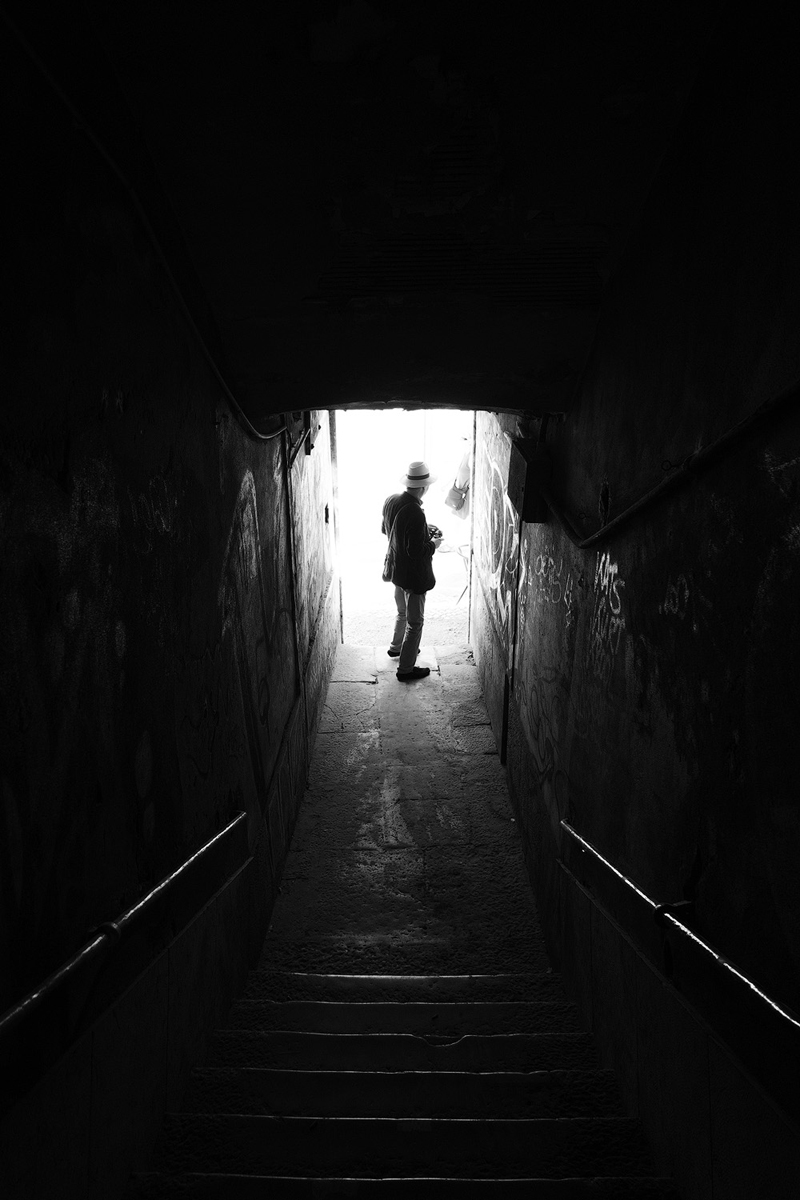

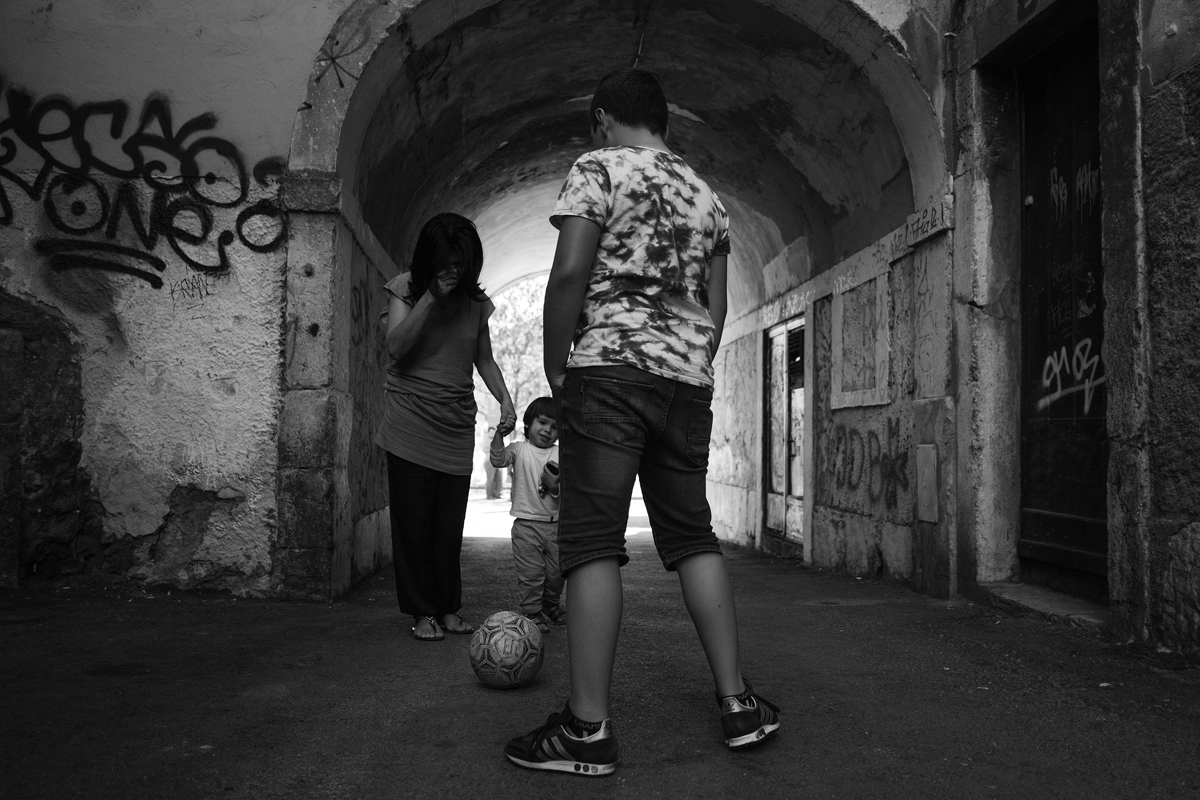
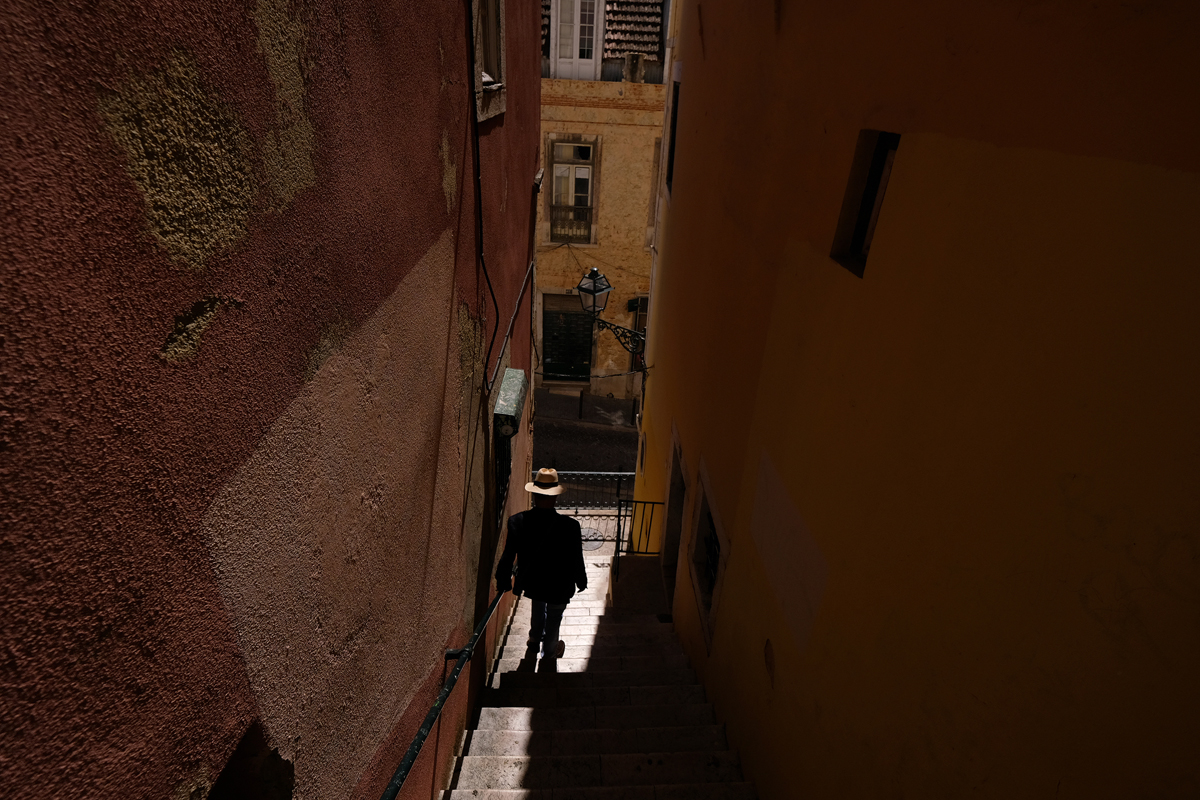
After lunch myself and Hugo decided to set a small project. We took the participants to one of Lisbon’s metro stations and told them that they had to work the area and keep looking for new angles until they had an image they were happy with. On first look it seems quite challenging as there’s not much to see in the entrance to the station, but there’s a steady passage of people and this particular station has quite a bit of natural light. Working in a small area and trying new things to get images starts to open your eyes to new possibilities. Pretty soon your seeing things in a different way and suddenly there seem to be lots of different things to point your camera at. The lighting here was pretty yellow and the surroundings almost exclusively grey, so I switched to the Acros film simulation which gives a really punchy, contrasty black and white look that suited the setting.
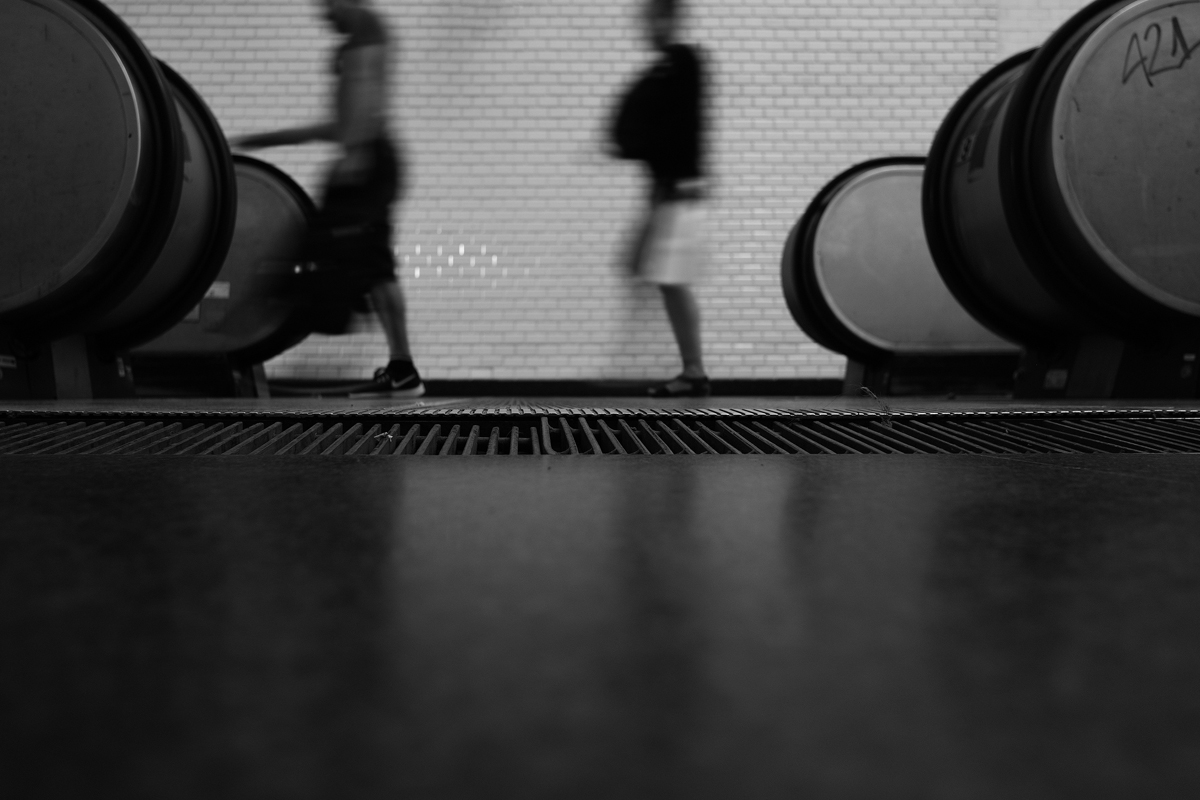
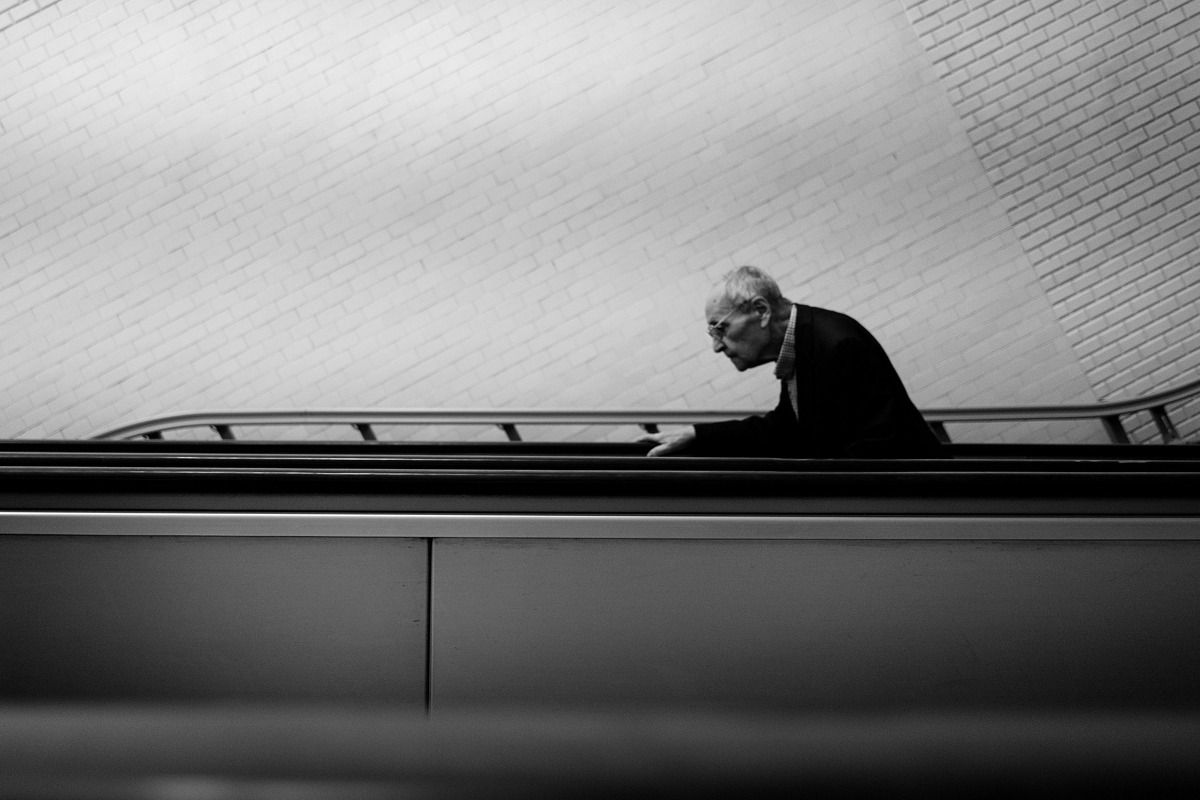
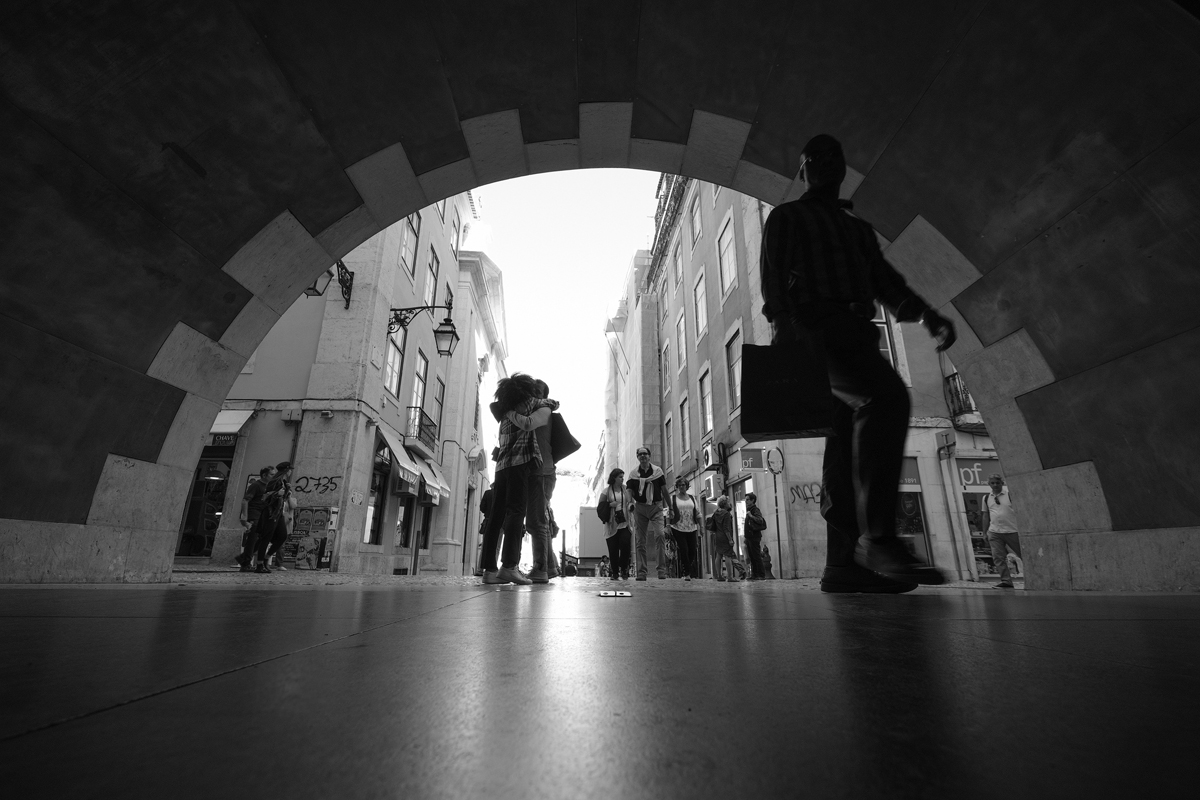
Later in the afternoon we walked up to the main square and spent some time looking at the way people’s shadows and silhouettes from the low sun interacted with the tiles and paving stones there. With the light getting low and contrast very high, I found myself still using the Acros simulation.
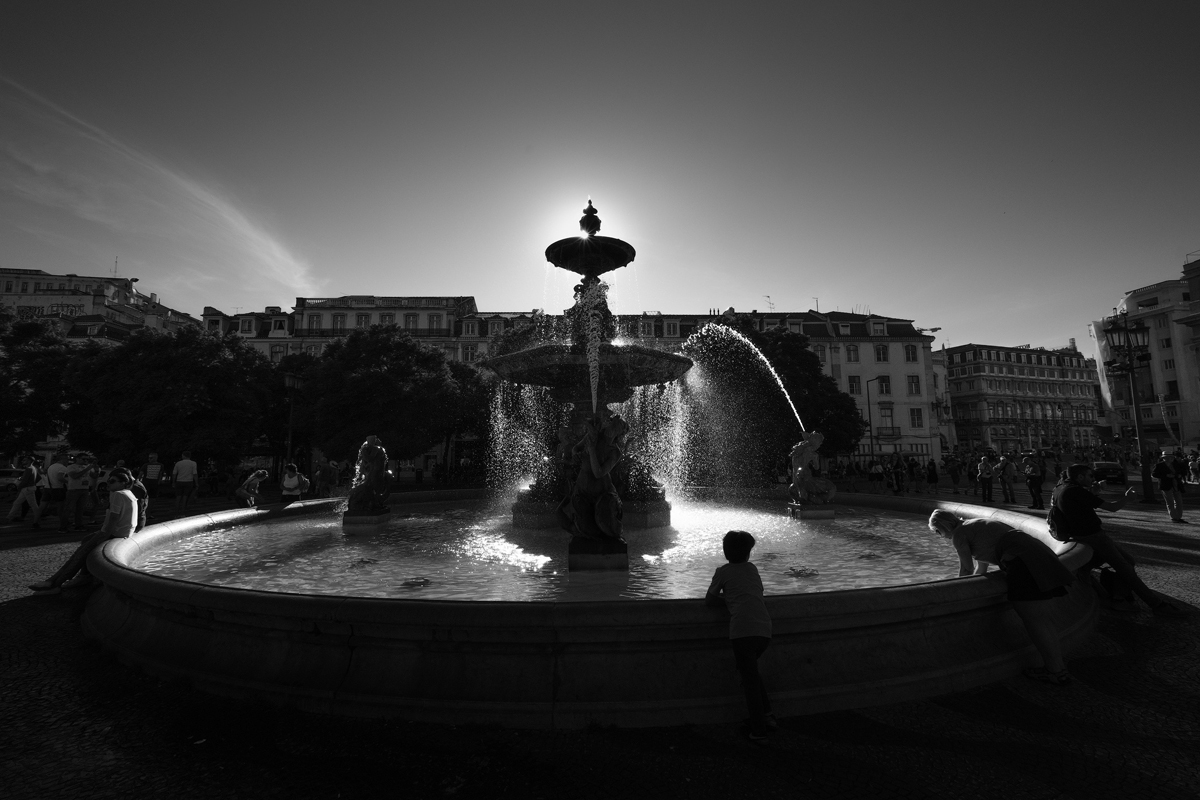
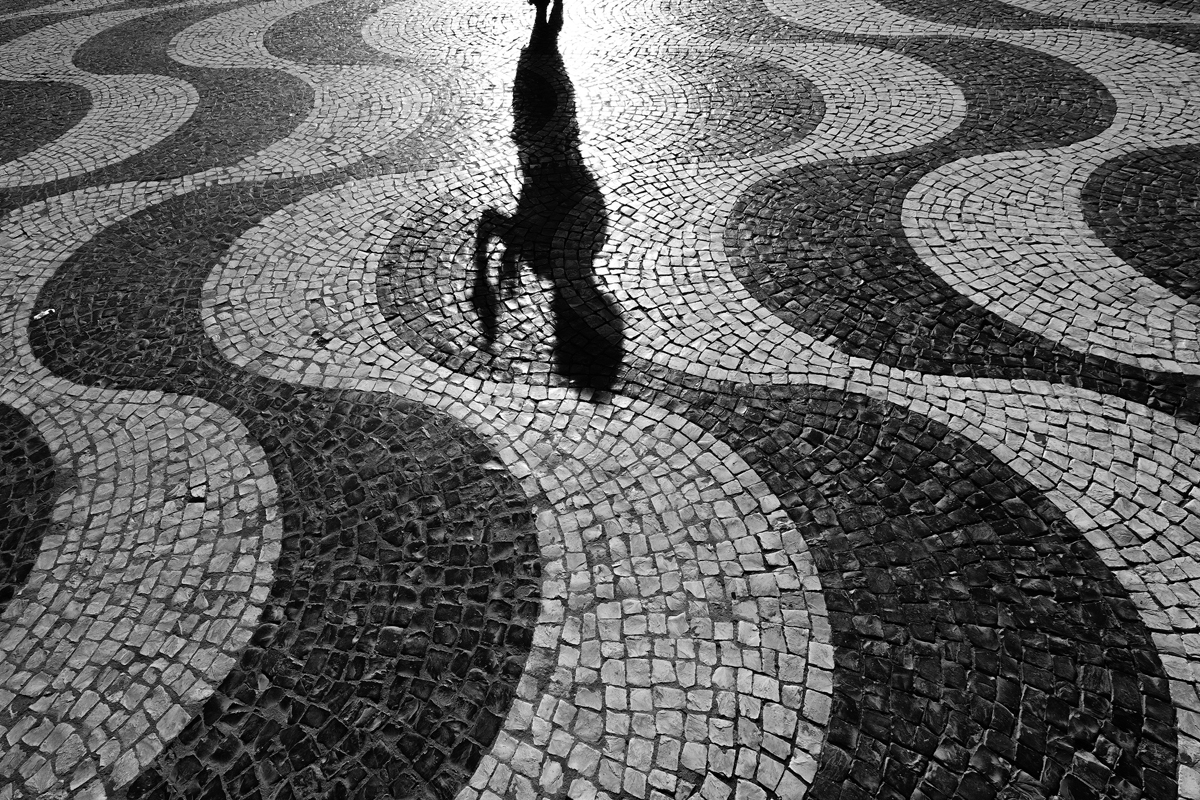
We finished shooting for the day in Belem before walking along the riverfront to MAAT. It was early Saturday evening so there was lots of street life around and by now I was seeing everything in black and white so decided to stick to using Acros as I shot people relaxing in the late afternoon sun.
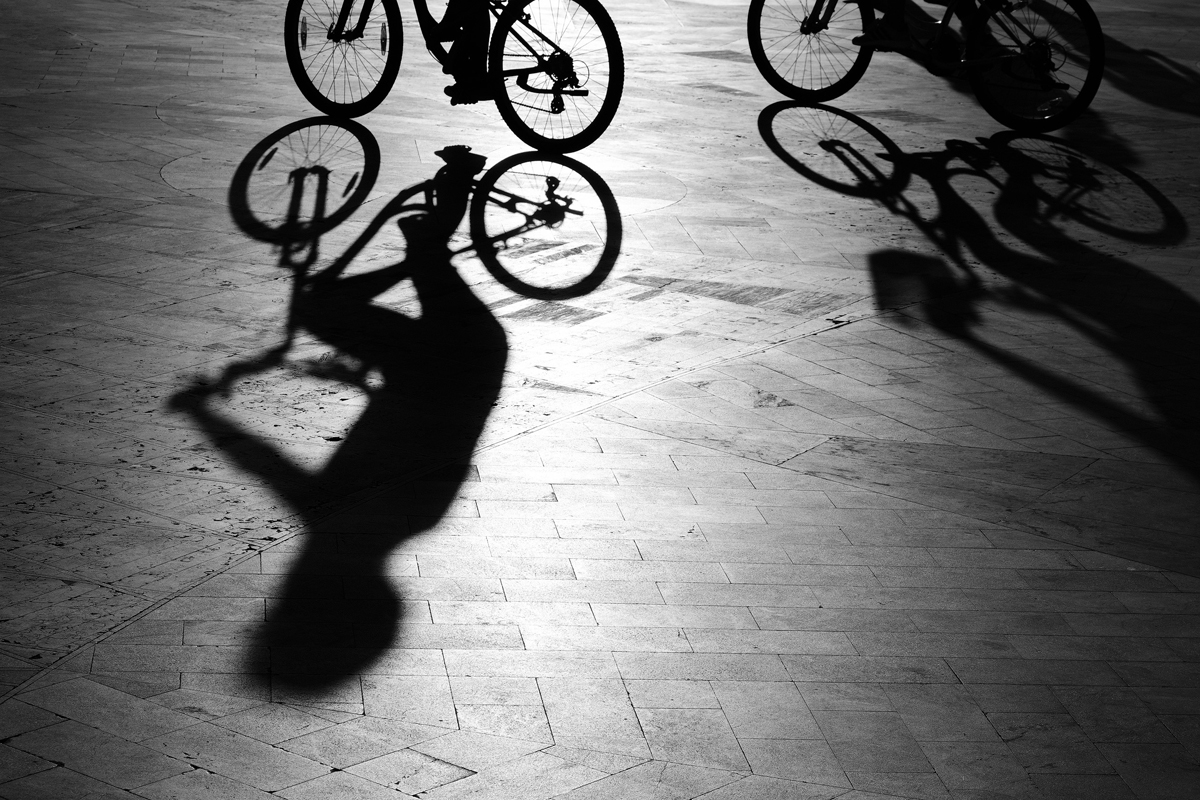
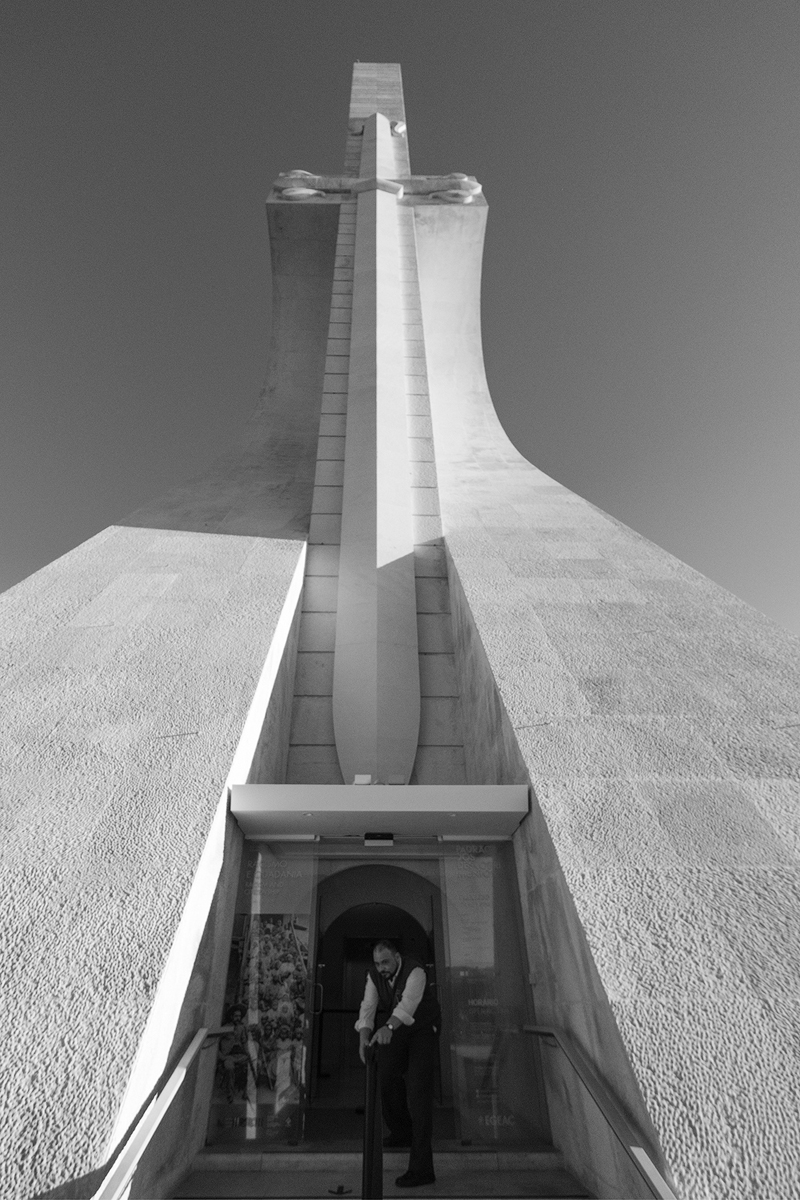


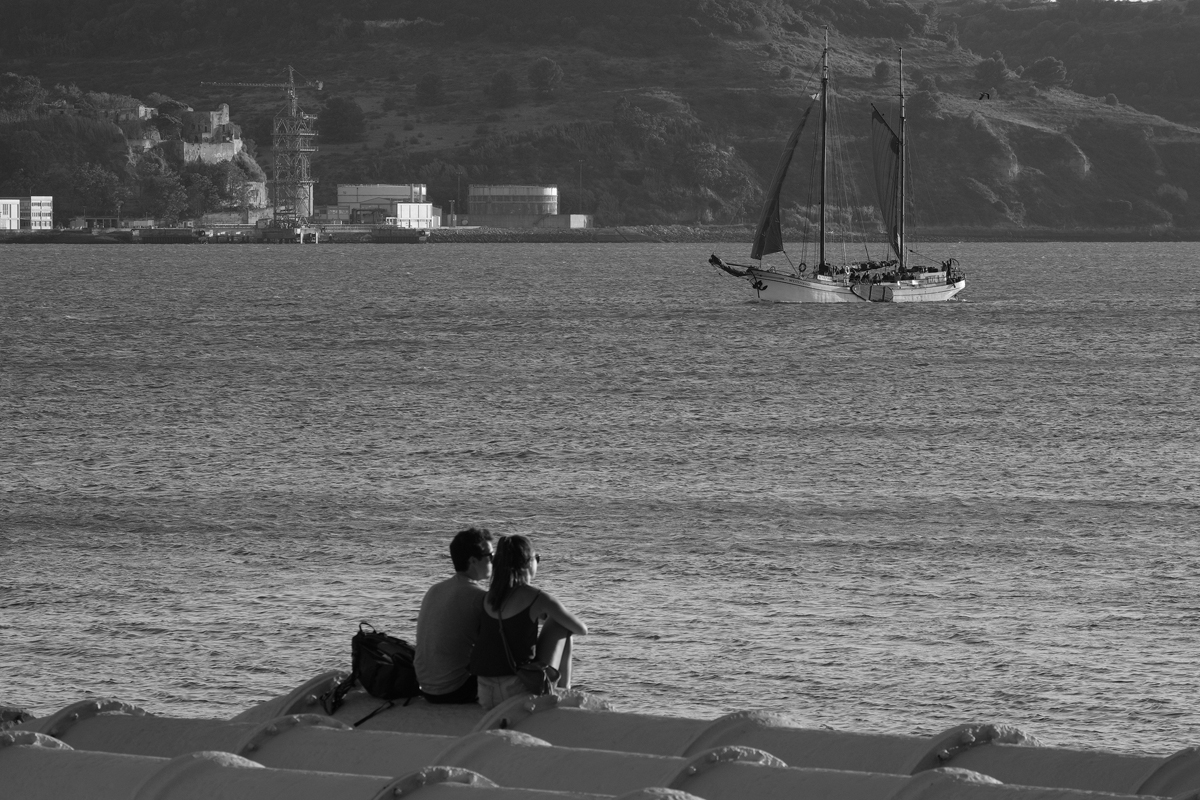

It’s a short walk along the riverside to MAAT (the museum or art, architecture and technology), and surprisingly the area in front of the museum was relatively free of people. It’s a beautiful building, like a wave next to the river, and it’s the kind of place where your eye can get lost in the abstract patterns. I focused on tight framing, trying to concentrate on the angles and lines, overexposing by a stop to bring out the white and create a high key scene.
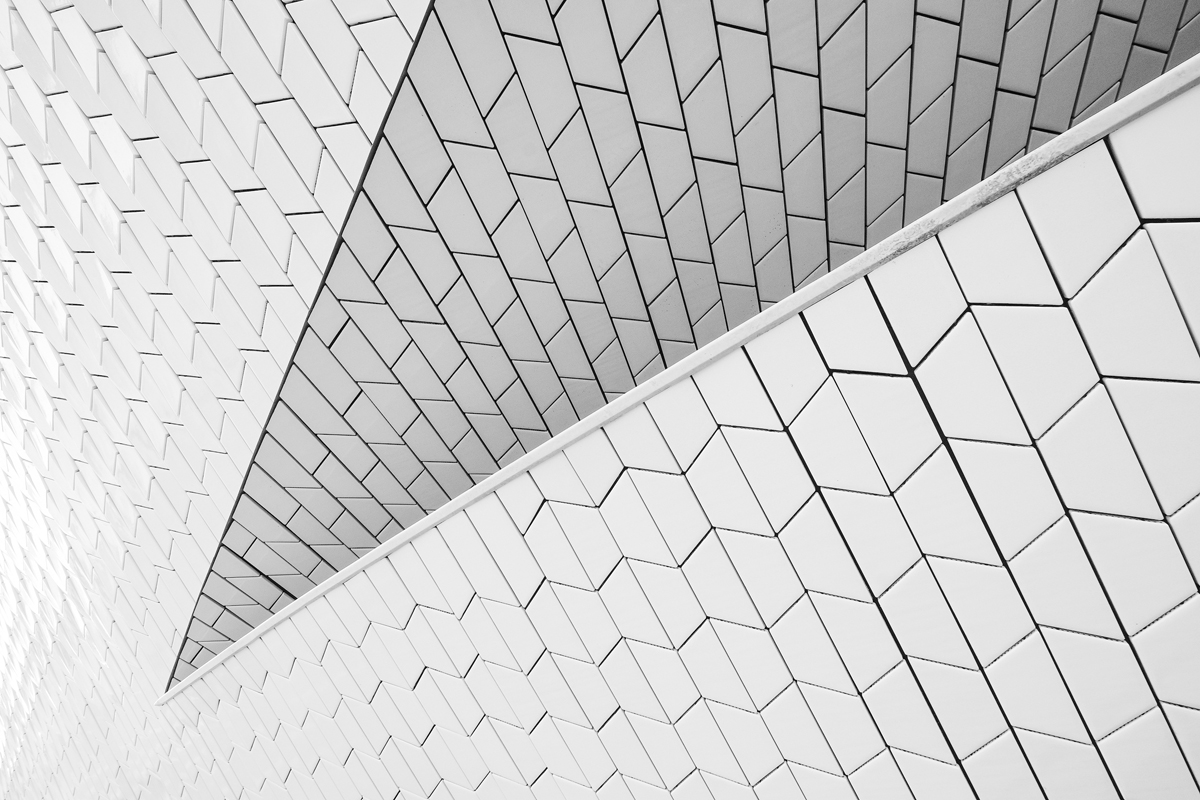
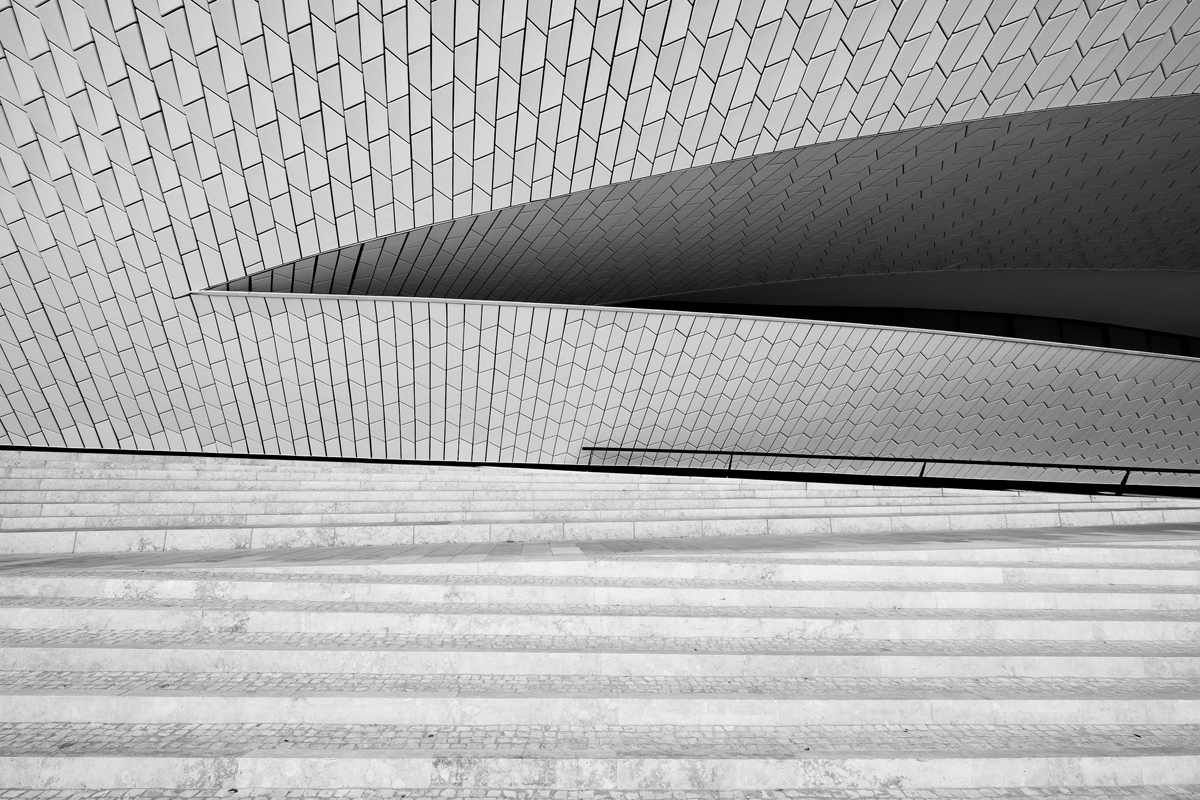
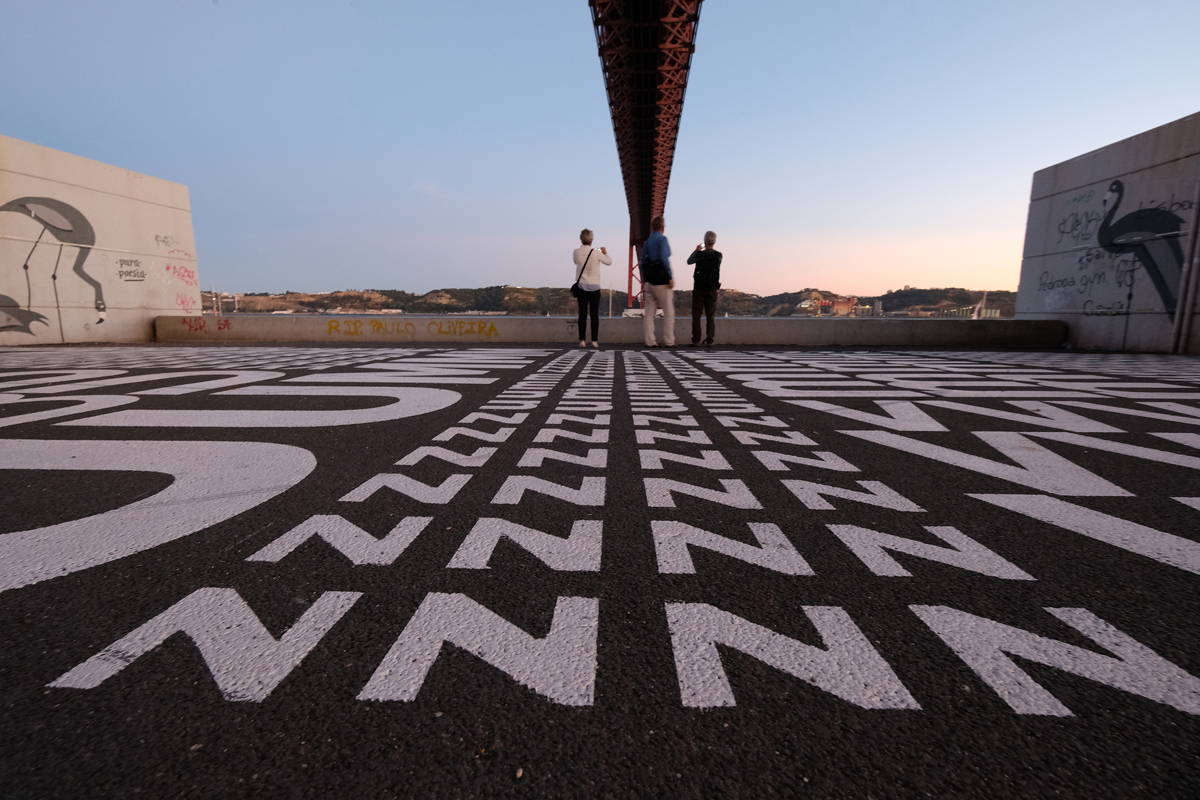
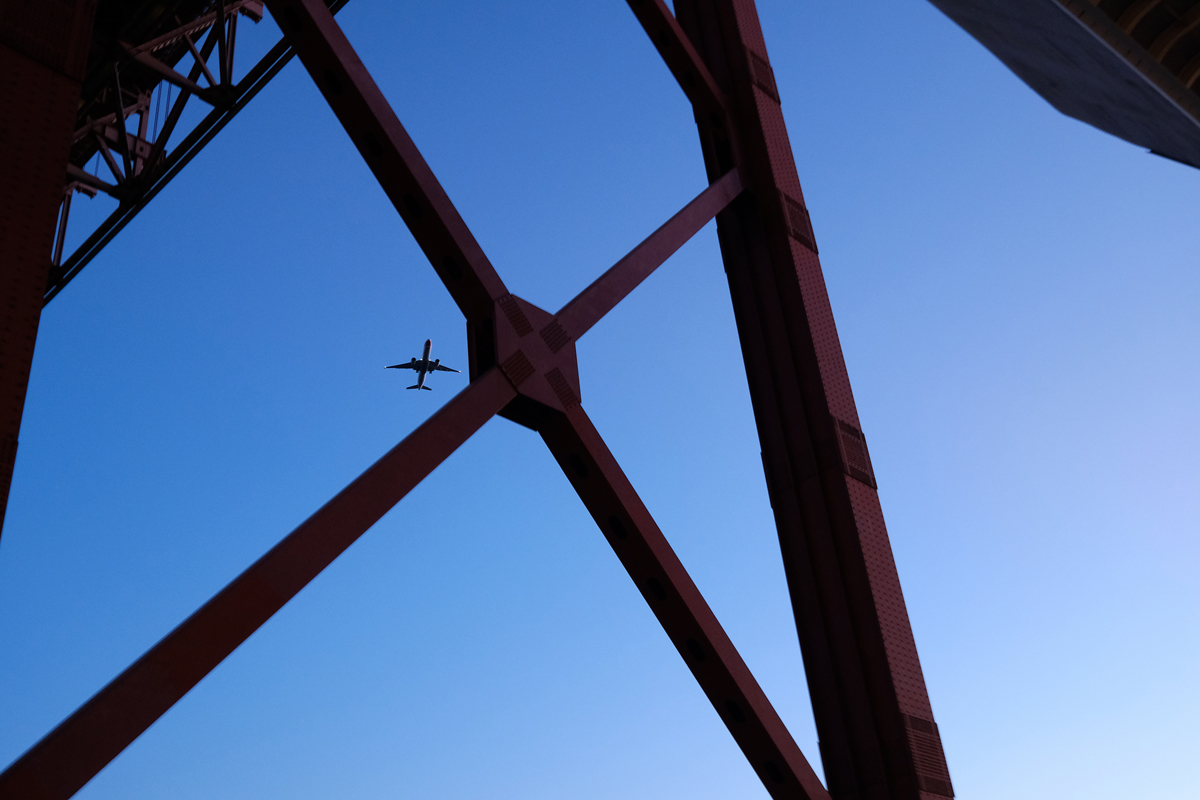
The final day was spent shooting around the area of Oriente station. Before we got there we came across two young girls, one who was photographing the other for her blog. We asked if they minded if we took some shots as well and my time spent as a wedding photographer kicked in as I looked for a slightly different angle
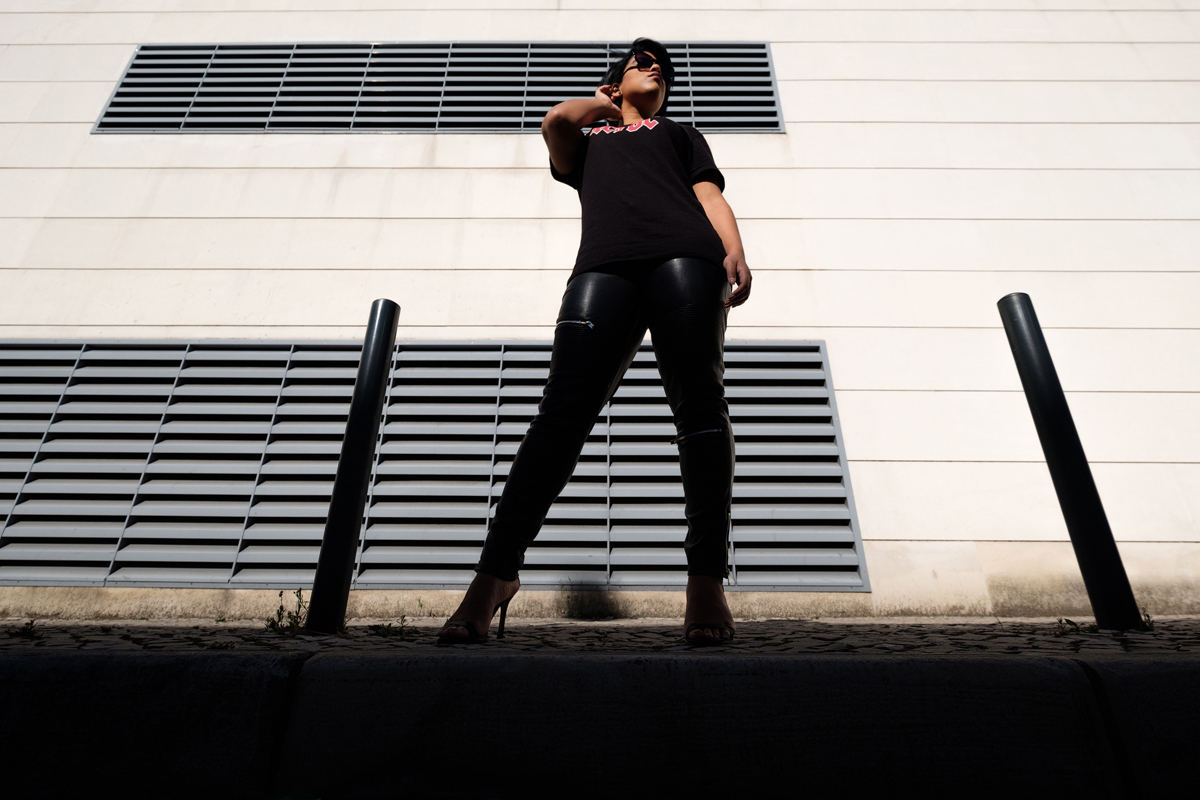
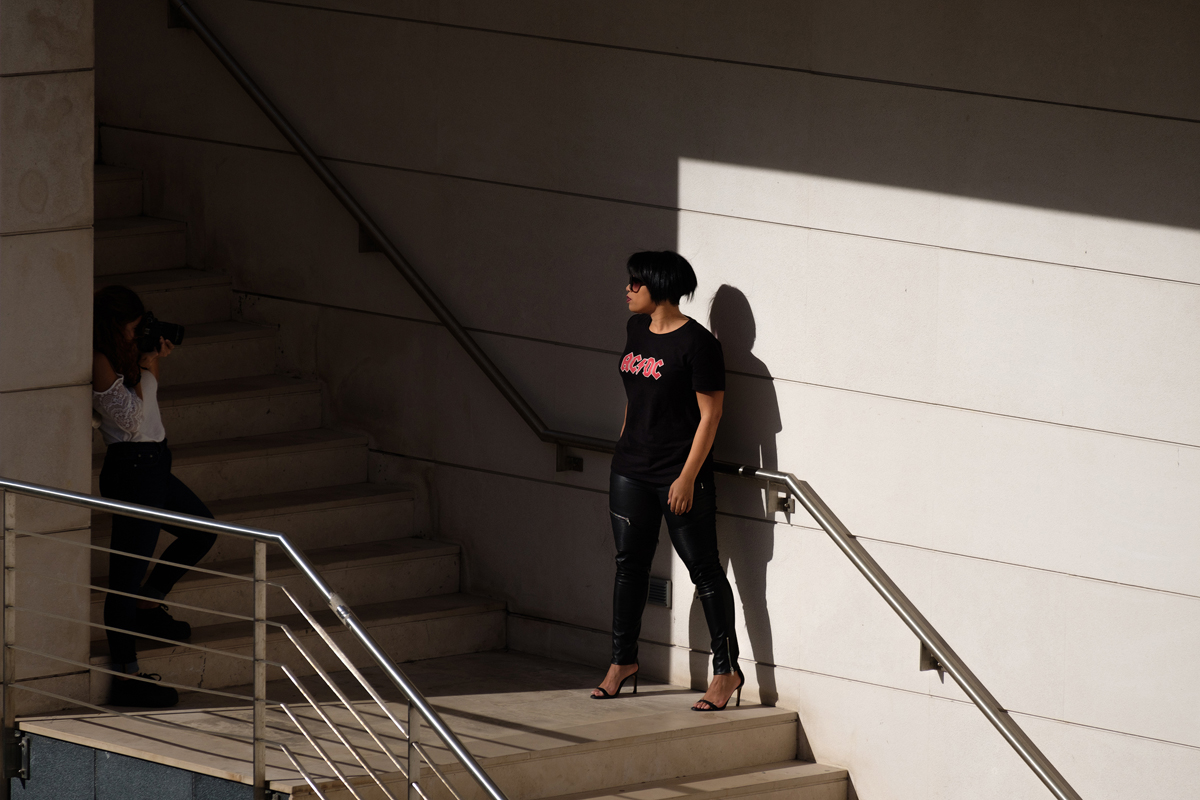
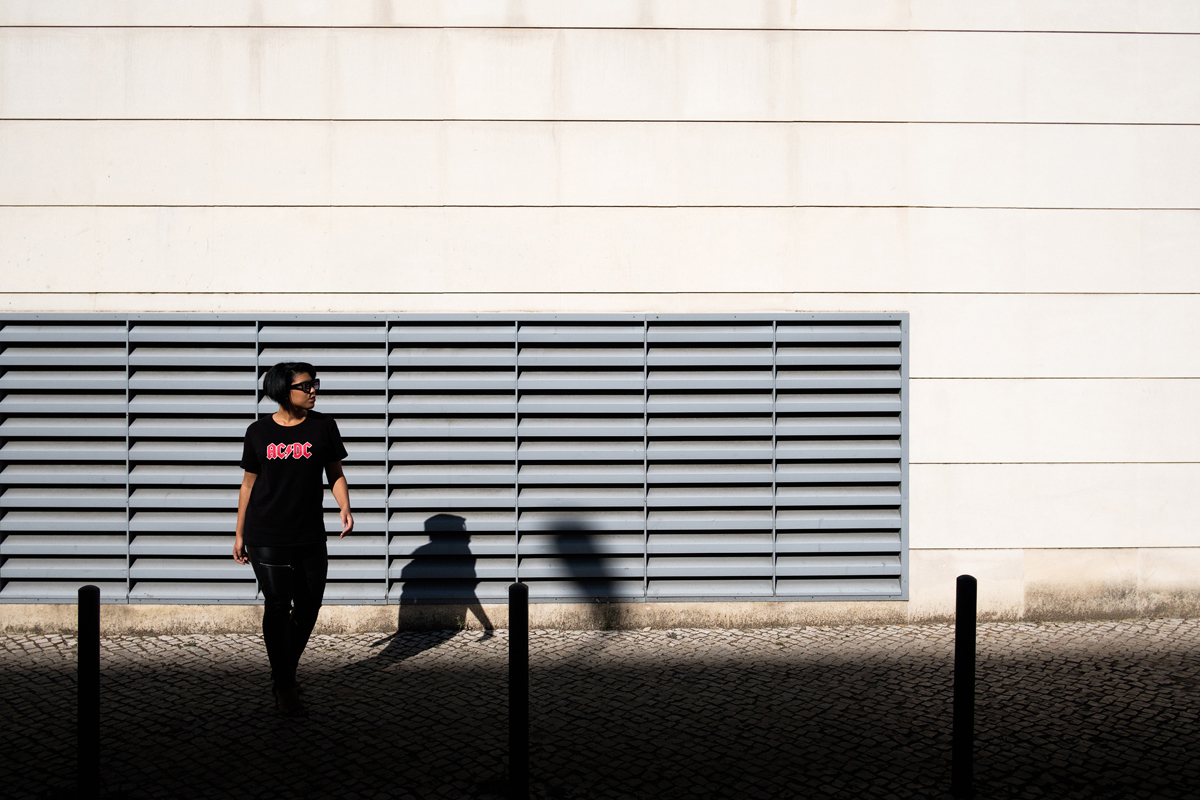

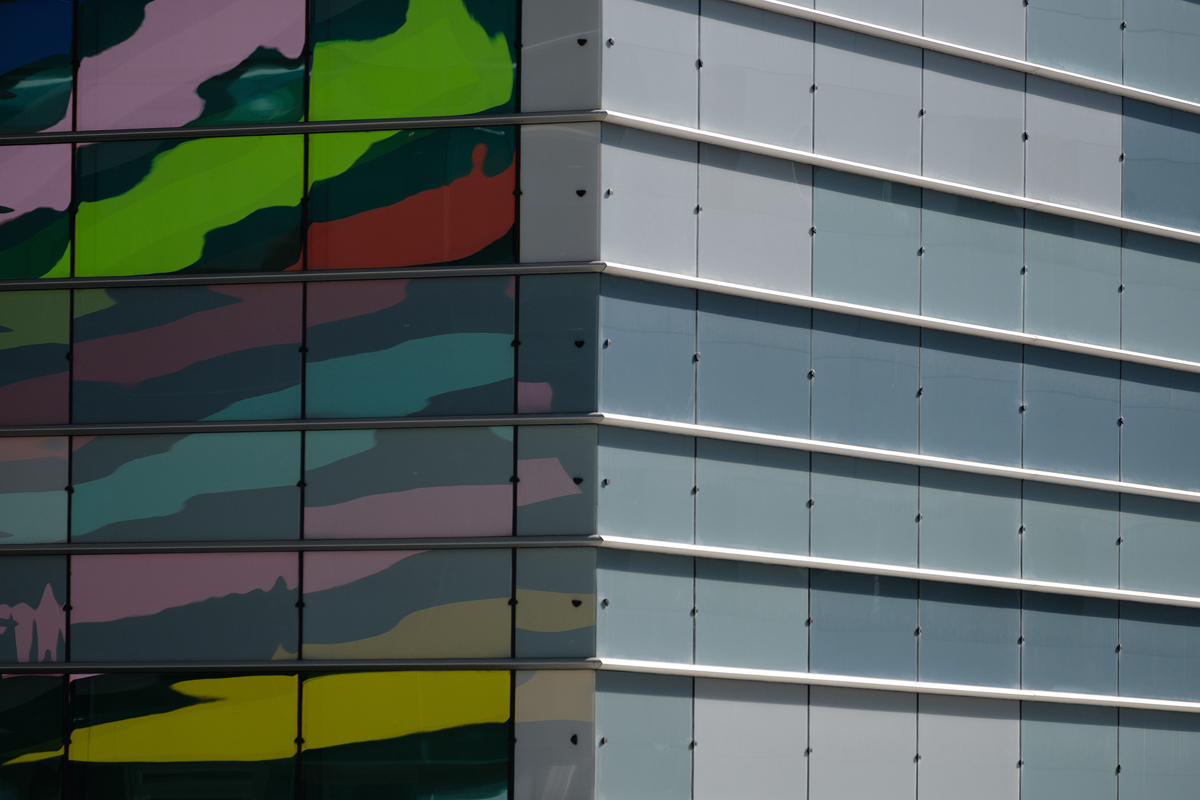
After that we headed to the station, a fascinating concrete construction of angles and lines. It’s an amazing place to shoot, there are some fascinating parts where the light and repeated patterns really pull the eye through the image and it’s easy to lose all track of time as you find different compositions and different parts to explore. A wide angle works particularly well here as you can frame the entire sweep of the vast halls and their lines leading up to the camera. Black and white also helps bring out the stark nature of the architecture.
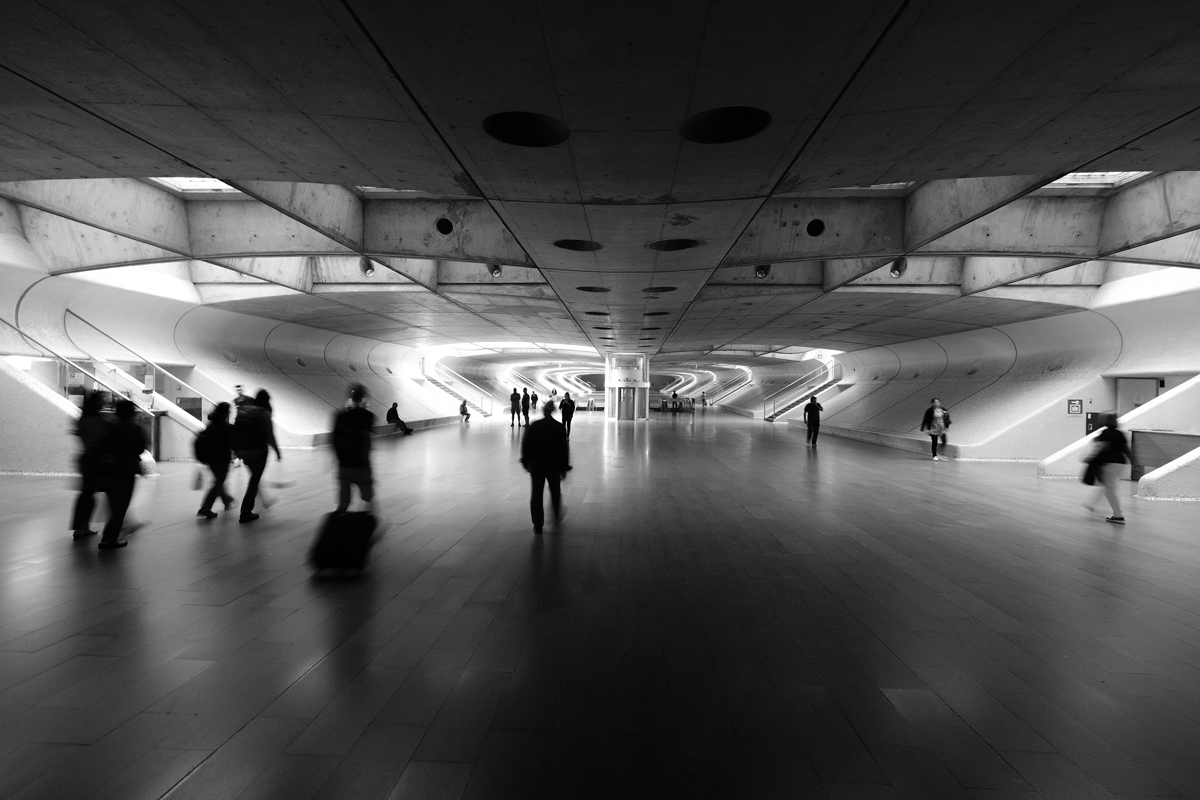
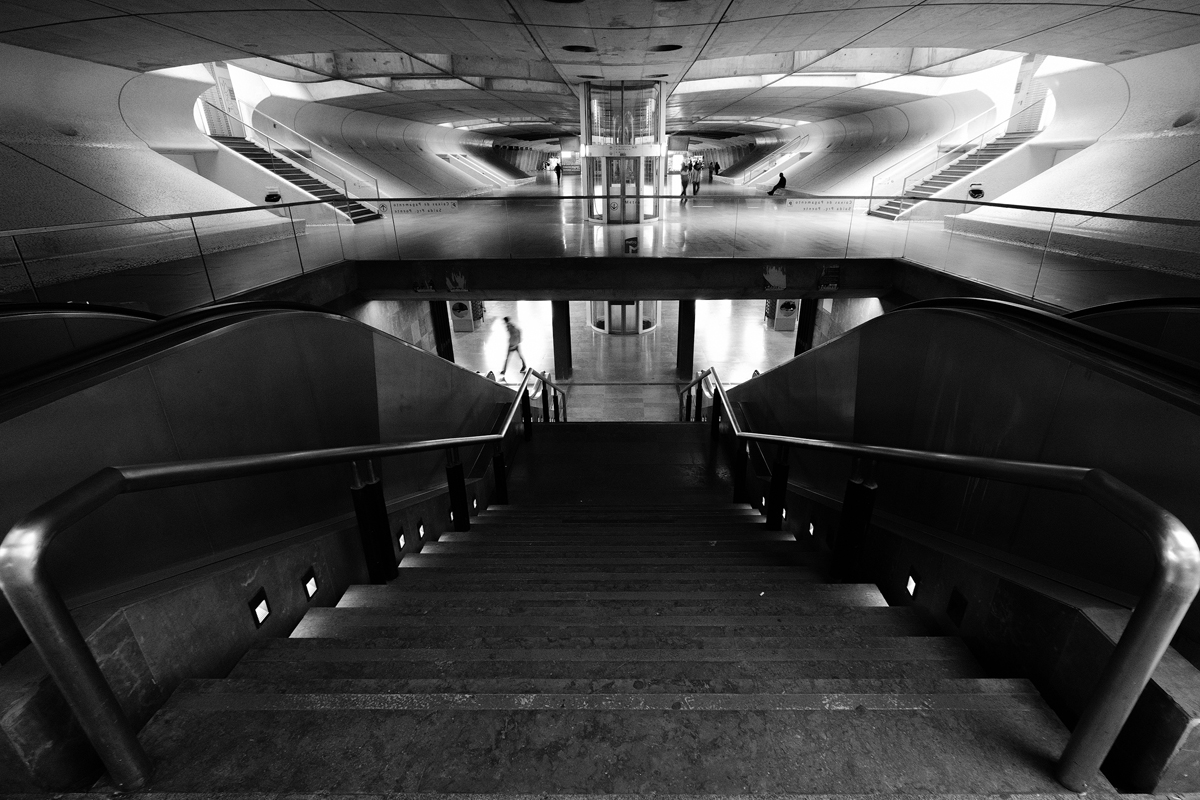
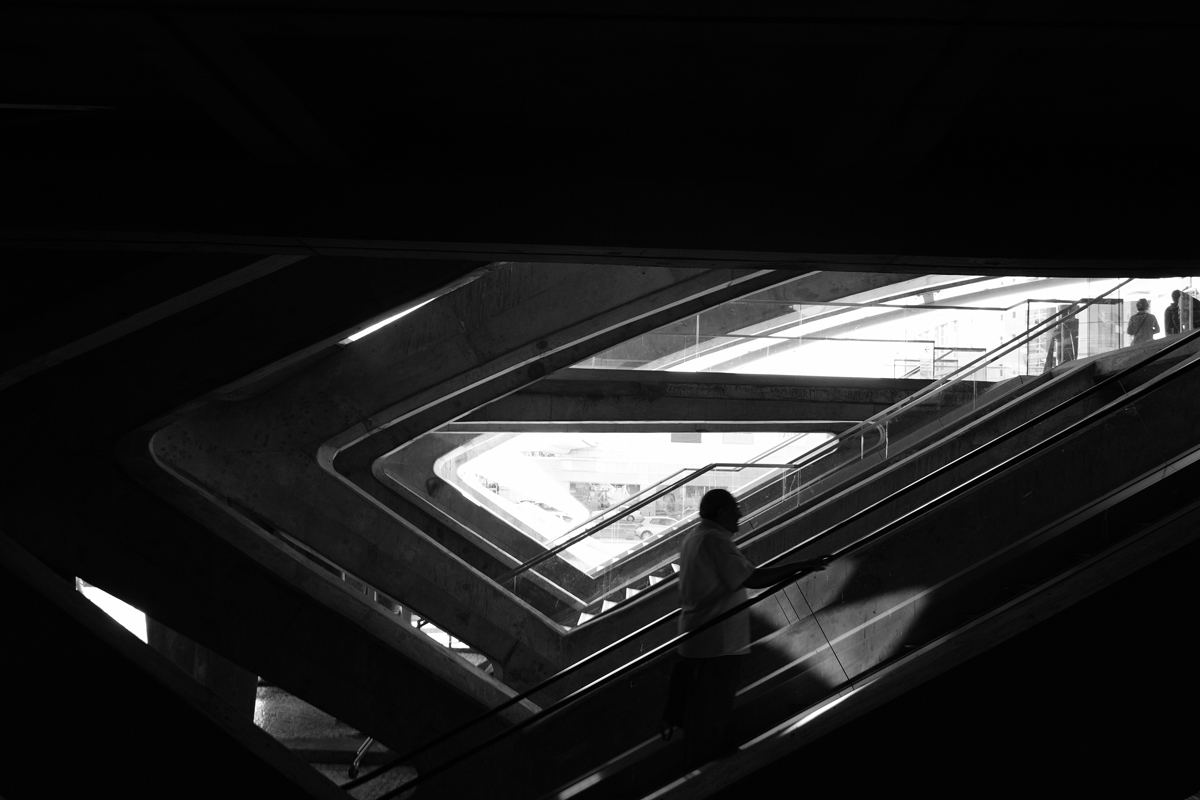
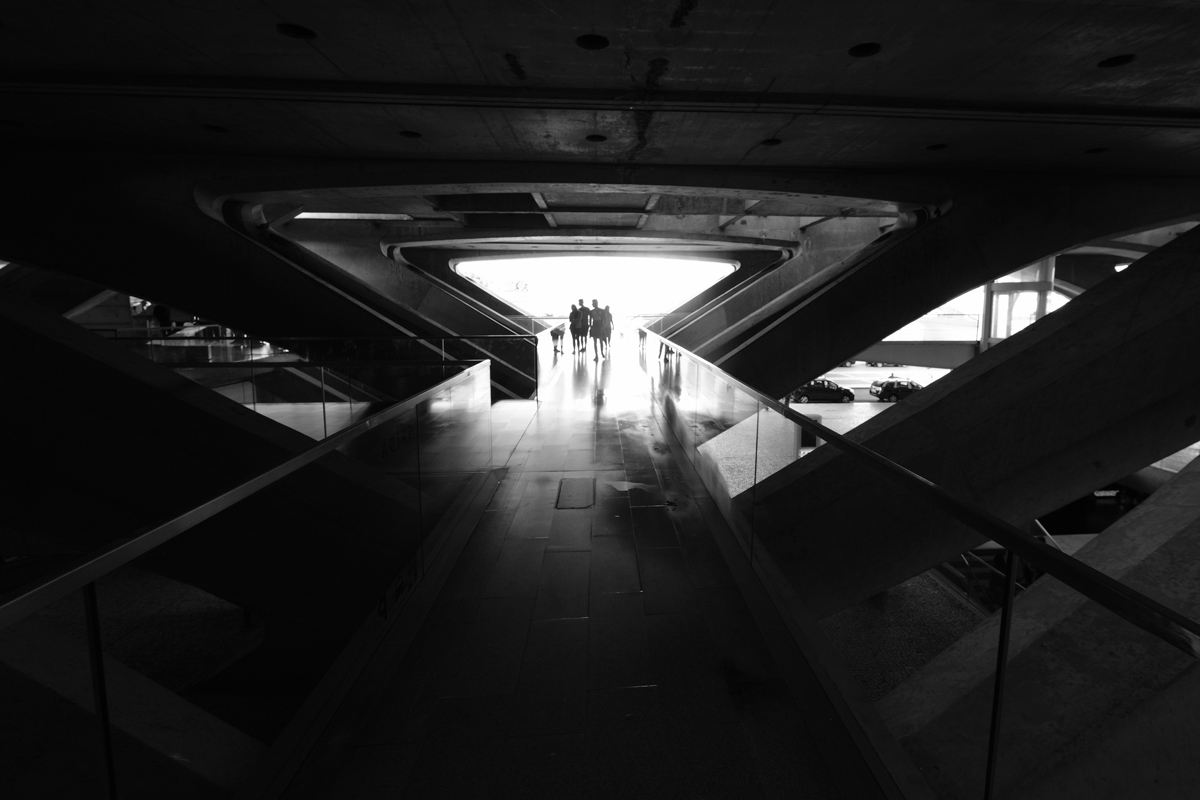
After our final lunch we spent the last afternoon looking for spontaneous shots along the river front in Praça do Commercio, and I spent some time switching between shooting candids from the hip and aiming for more conventional environmental portraits. This calls for a slightly different approach than the “wait for someone to walk through the scene” technique and requires you to pick out faces or colours from the crowd quickly and get close enough to shoot them. The articulating screen is useful for this kind of photography as it allows you to shoot from the chest more discretely, and in combination with the electronic shutter making the camera almost silent, it’s much easier to get candid shots from quite close to the subject. Black and white again works really well, but I also enjoyed using colour here; from the bright colours of the flag and the man’s shirt, to the more muted tones of the river and concrete waterfront.
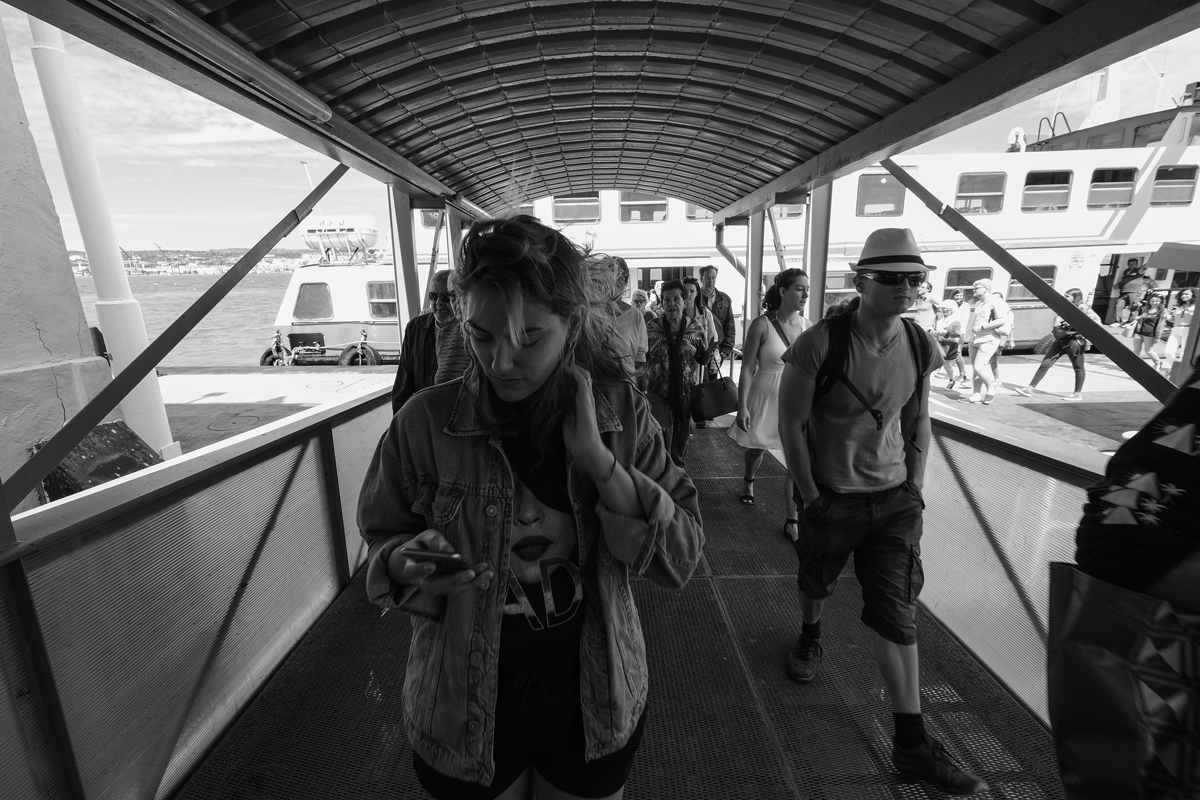
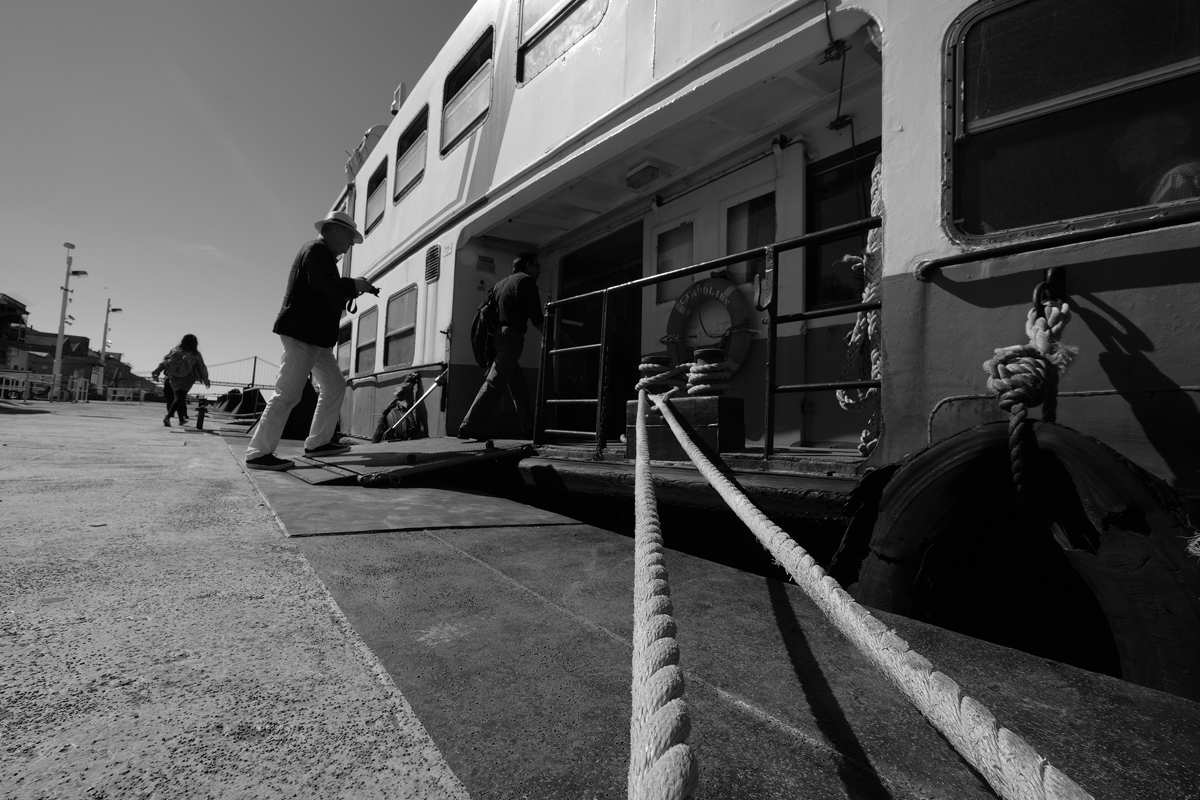
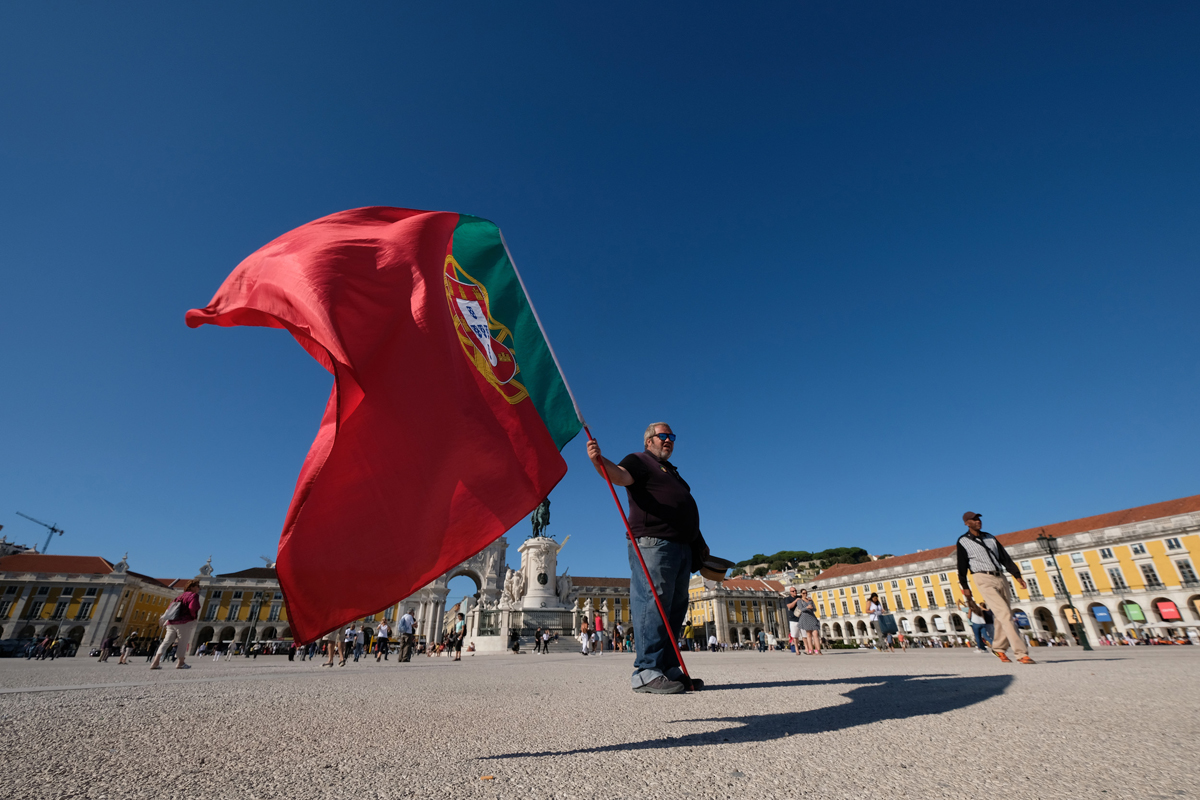
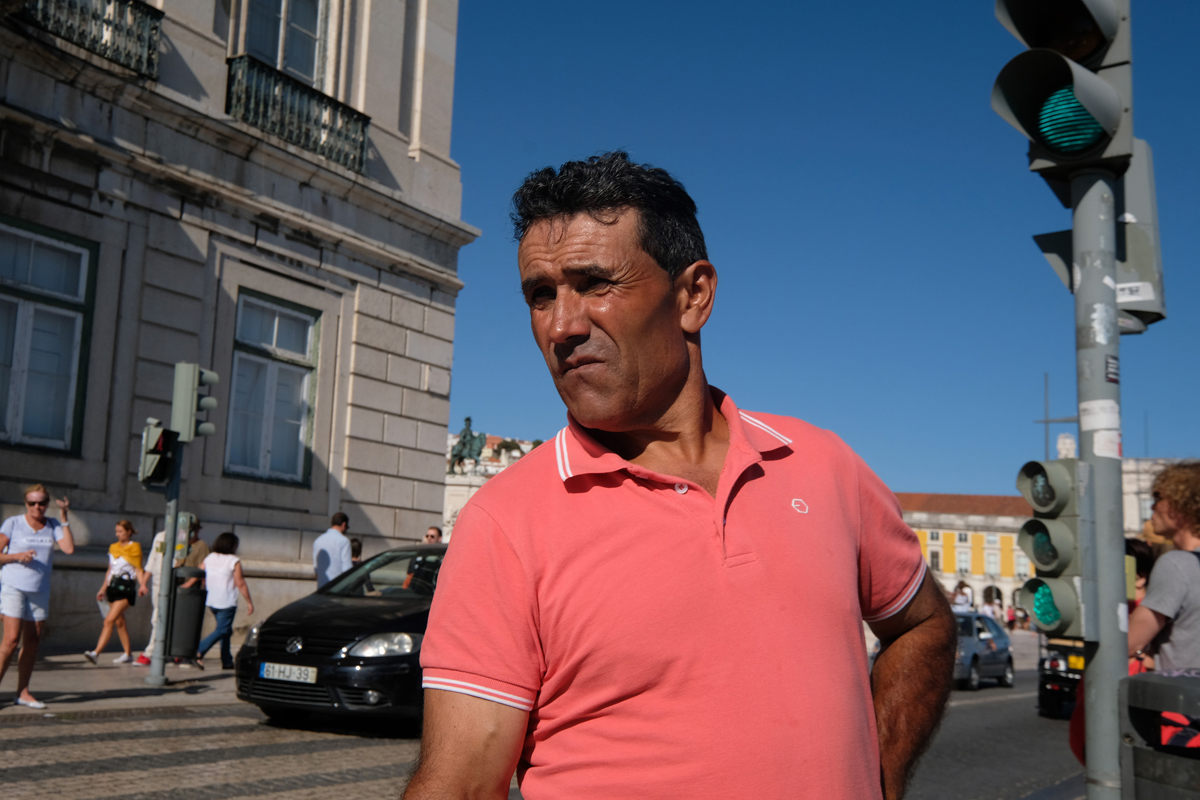
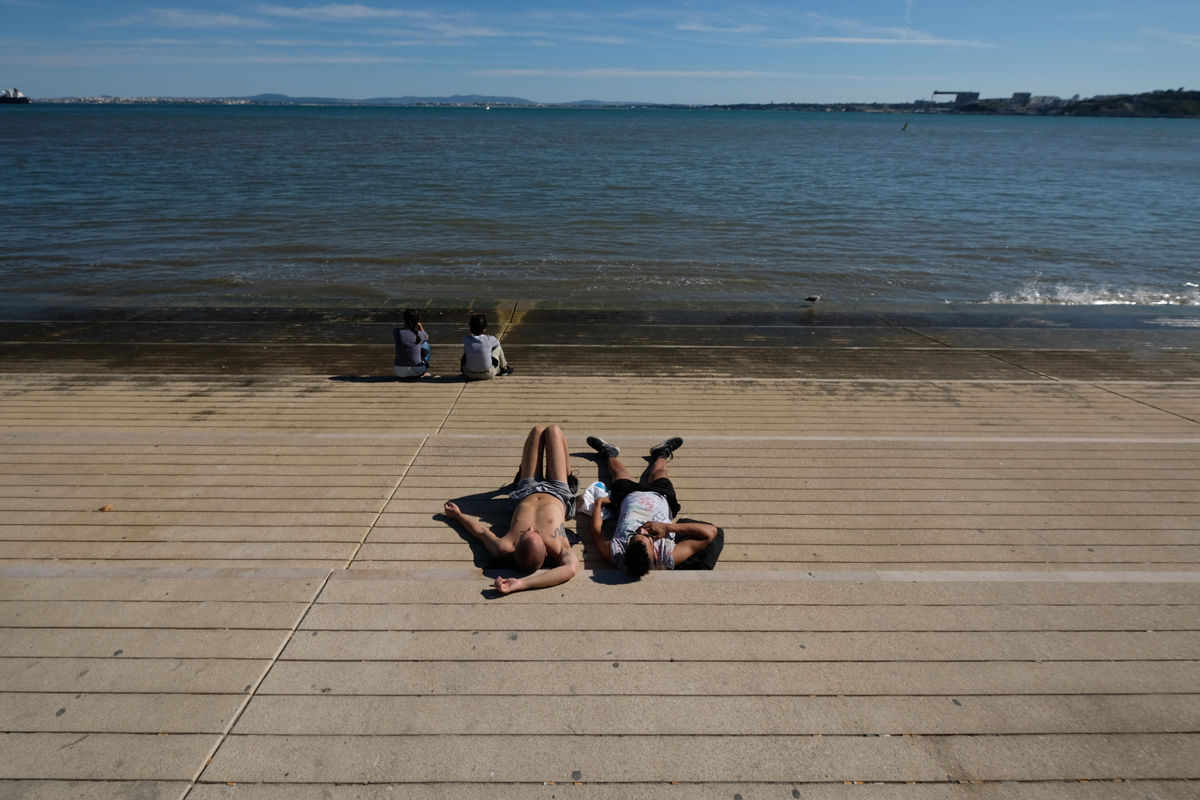
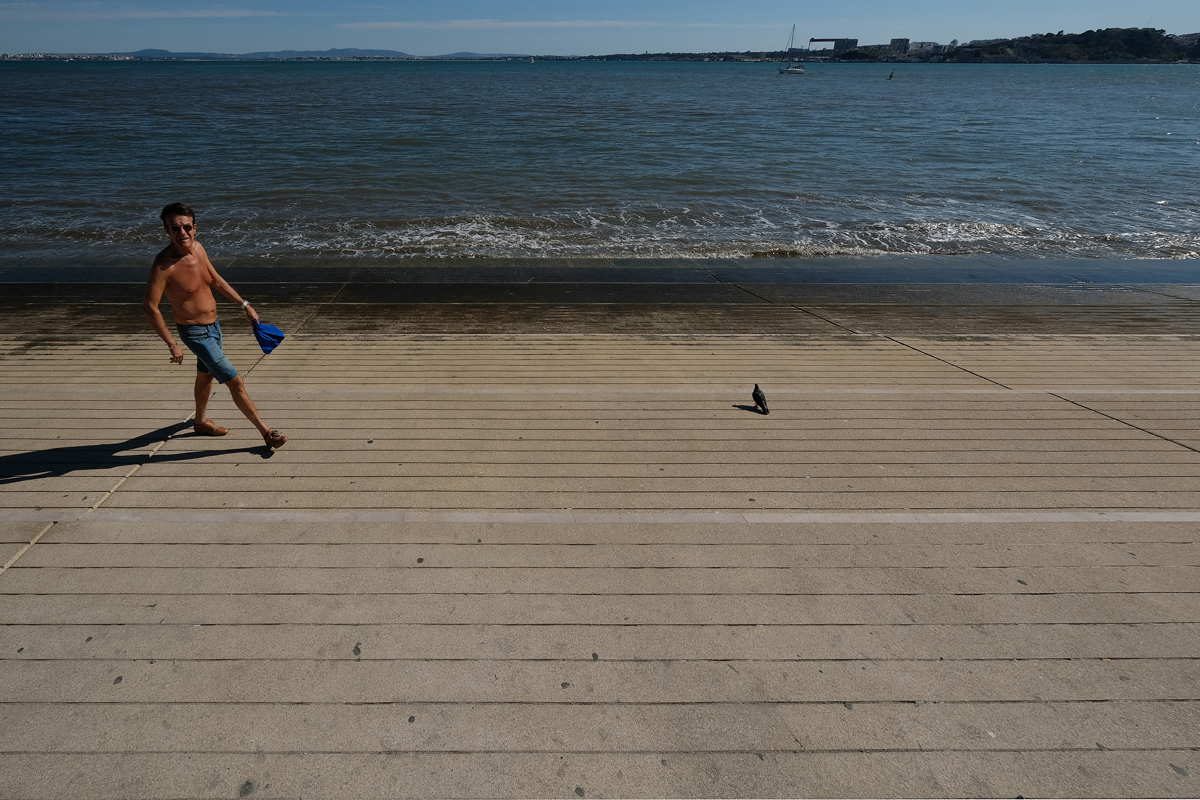
As the light got longer we headed back to Parque das Naçoes where as luck would have it the waterfall was turned on. The backlit water here makes a fantastic background as the water is turned into sparkling highlights with a relatively dark shadow-y background beyond. The key here is to wait and watch, and sooner or later someone will walk through and pose beneath the falling water.
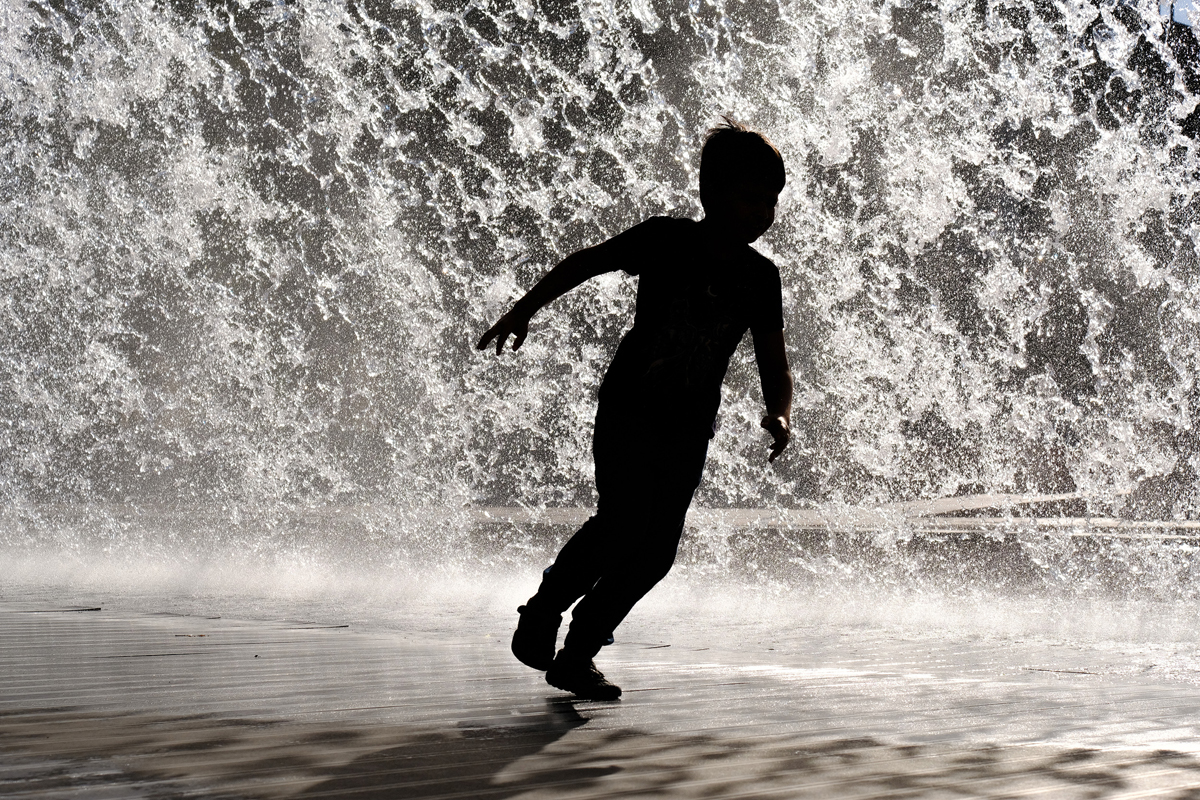
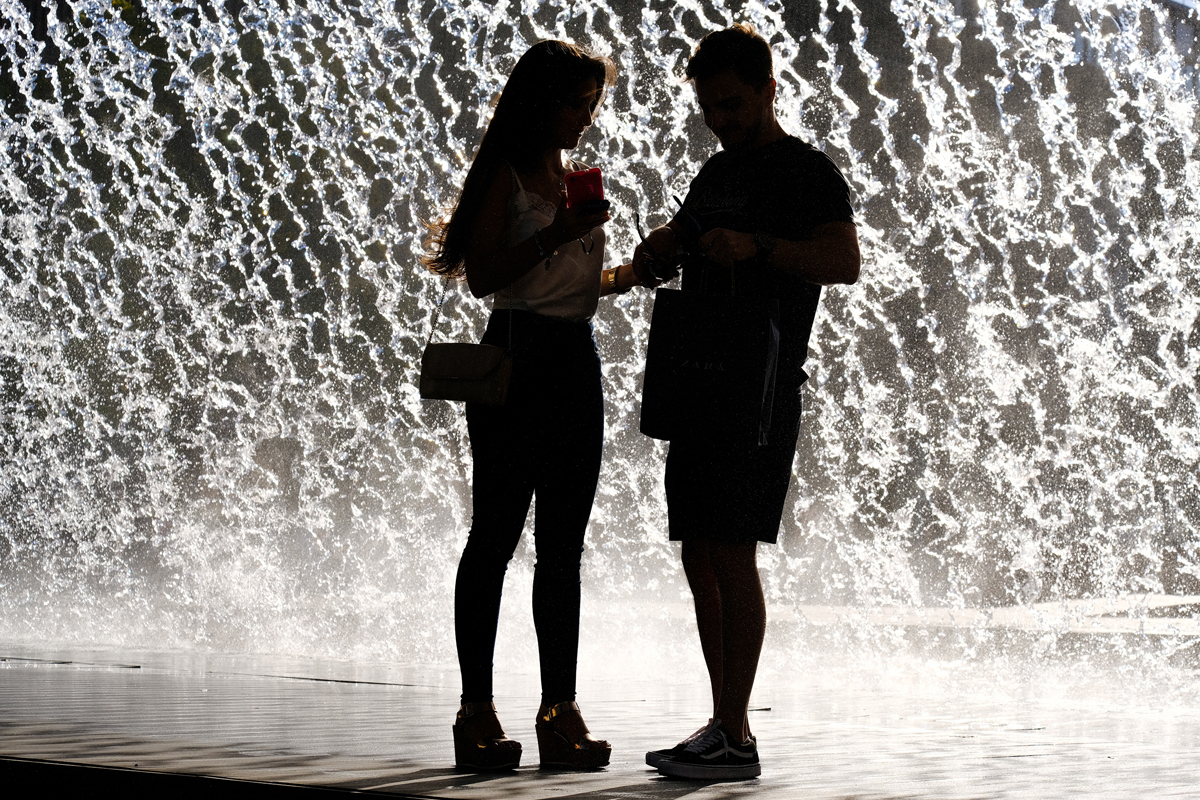
It’s a lovely location, and again one where you can happily spend ages just people watching, but there’s plenty of other things to shoot in the park as well. At this time of day the light makes so many things possible, and backlit water is always great for creating abstract compositions. This is one of the many “volcano” fountains in the park, shot with a telephoto and underexposed to drop the background into shadow.
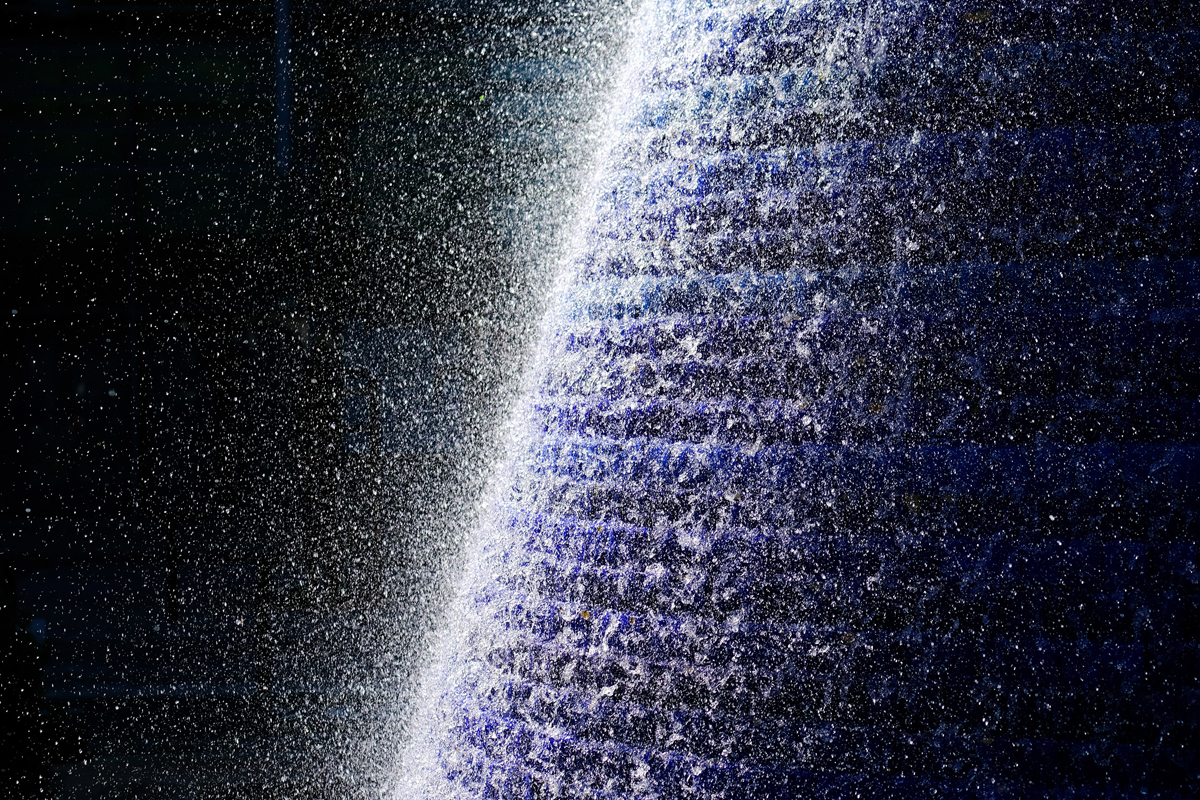
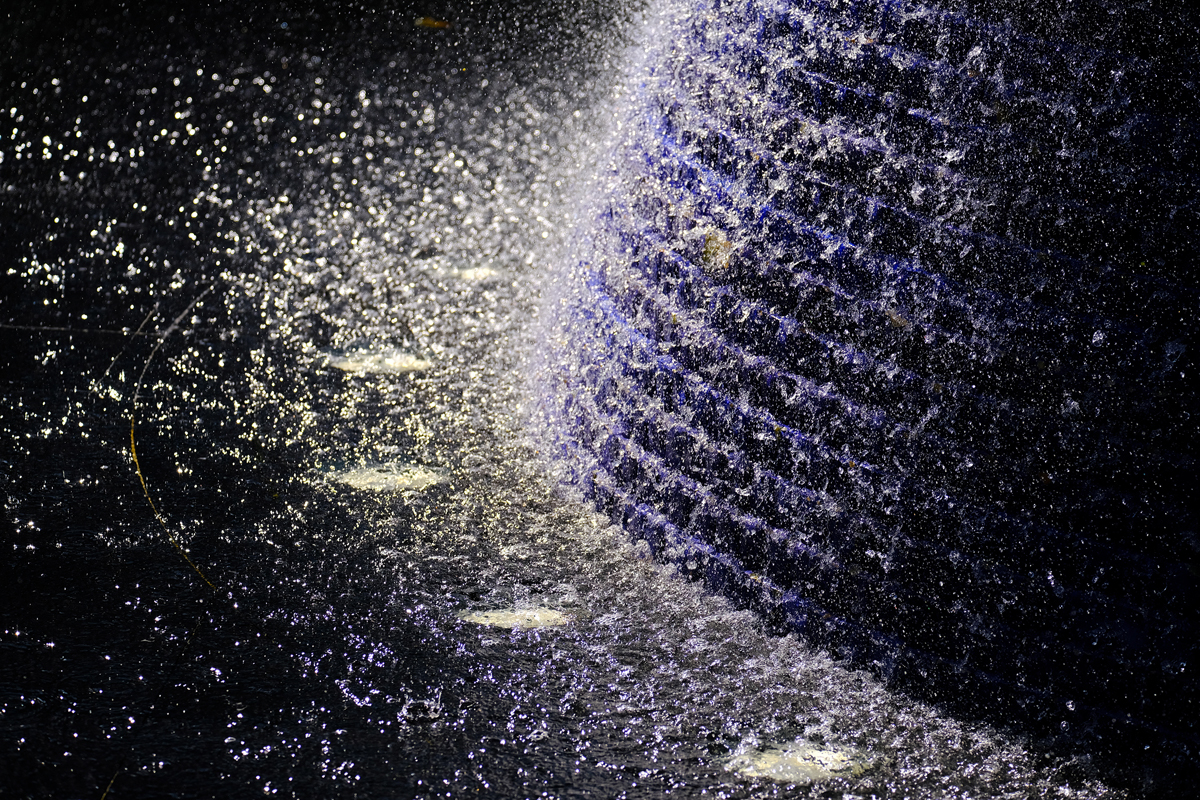
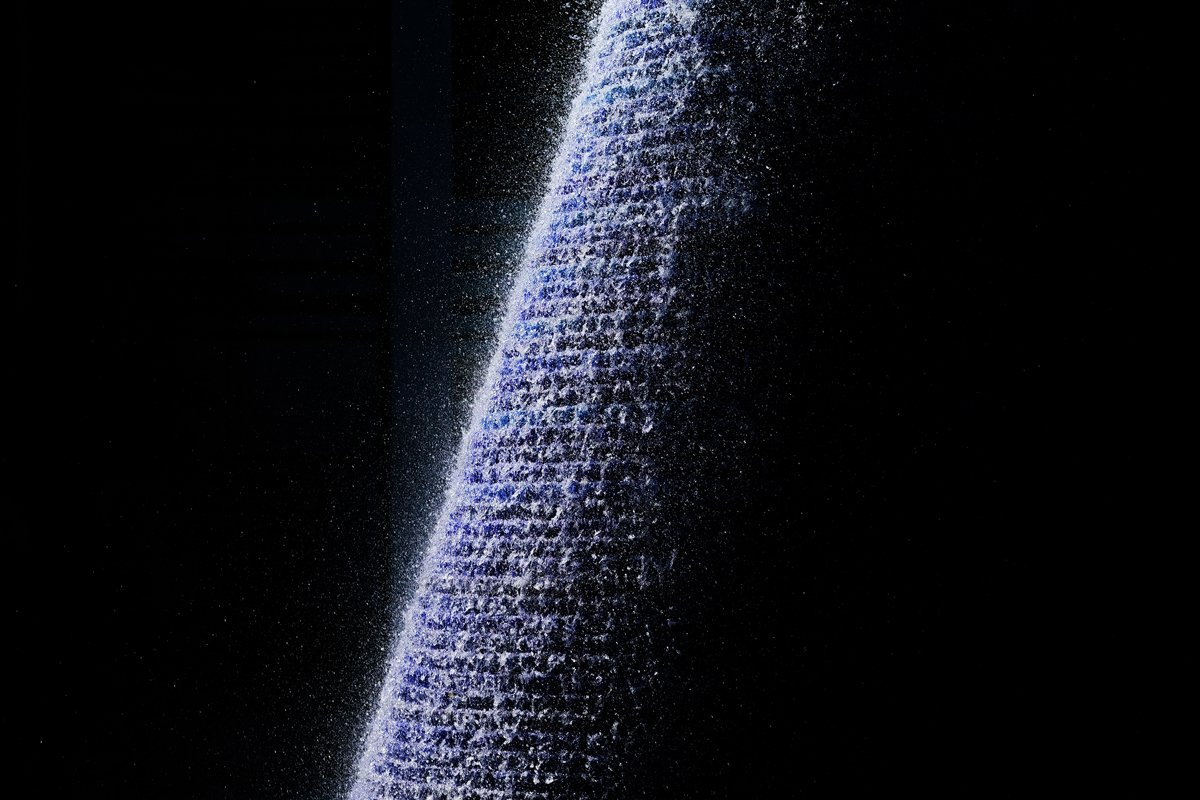
Finally, we spent some time capturing people as they walked around the park, including a group of Chinese women who were having their wedding party photos done there. Shooting the woman as the posed wasn’t all that interesting, so again I looked for shape, colour, detail and patterns using my telephoto lens.
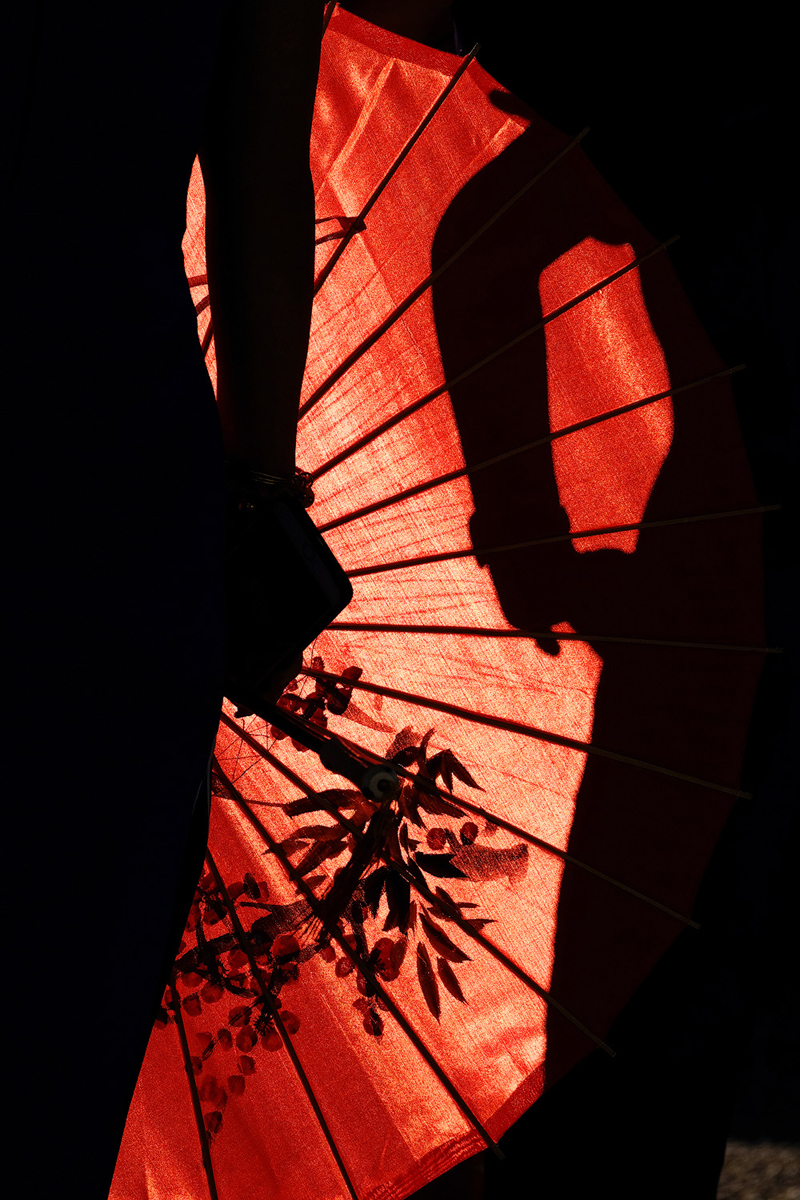
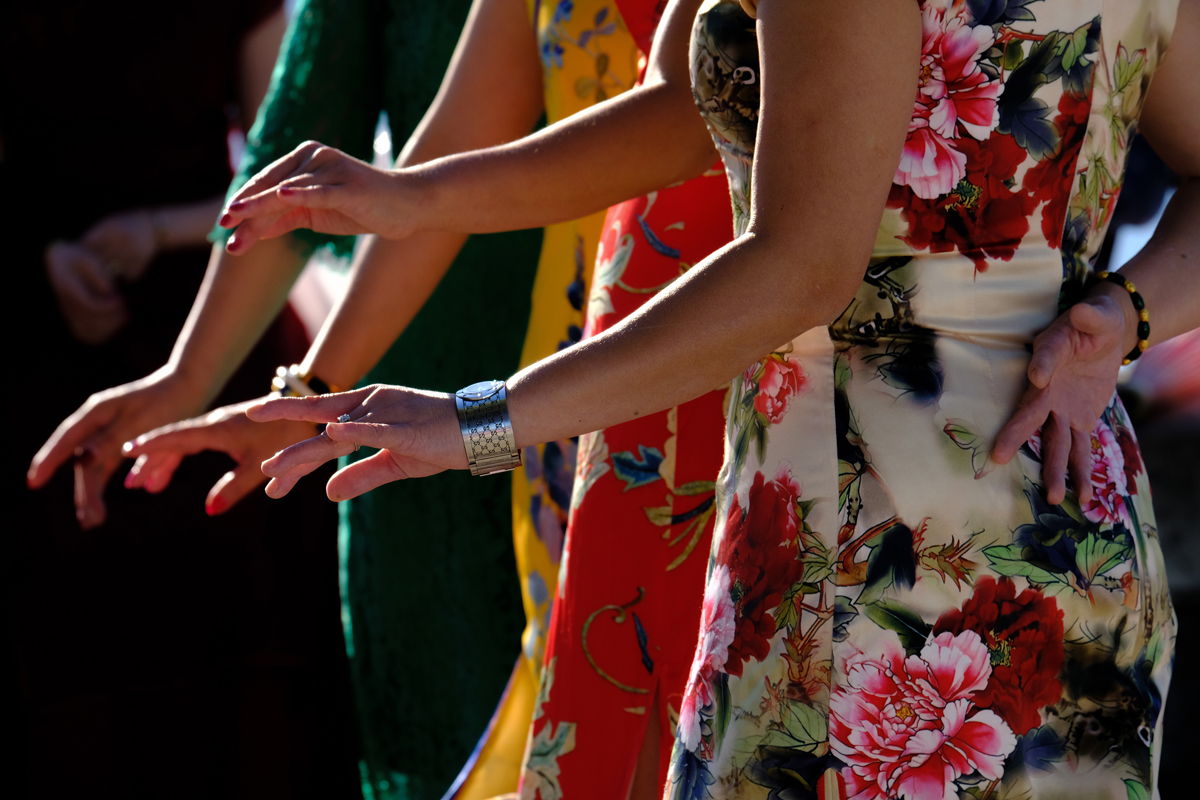
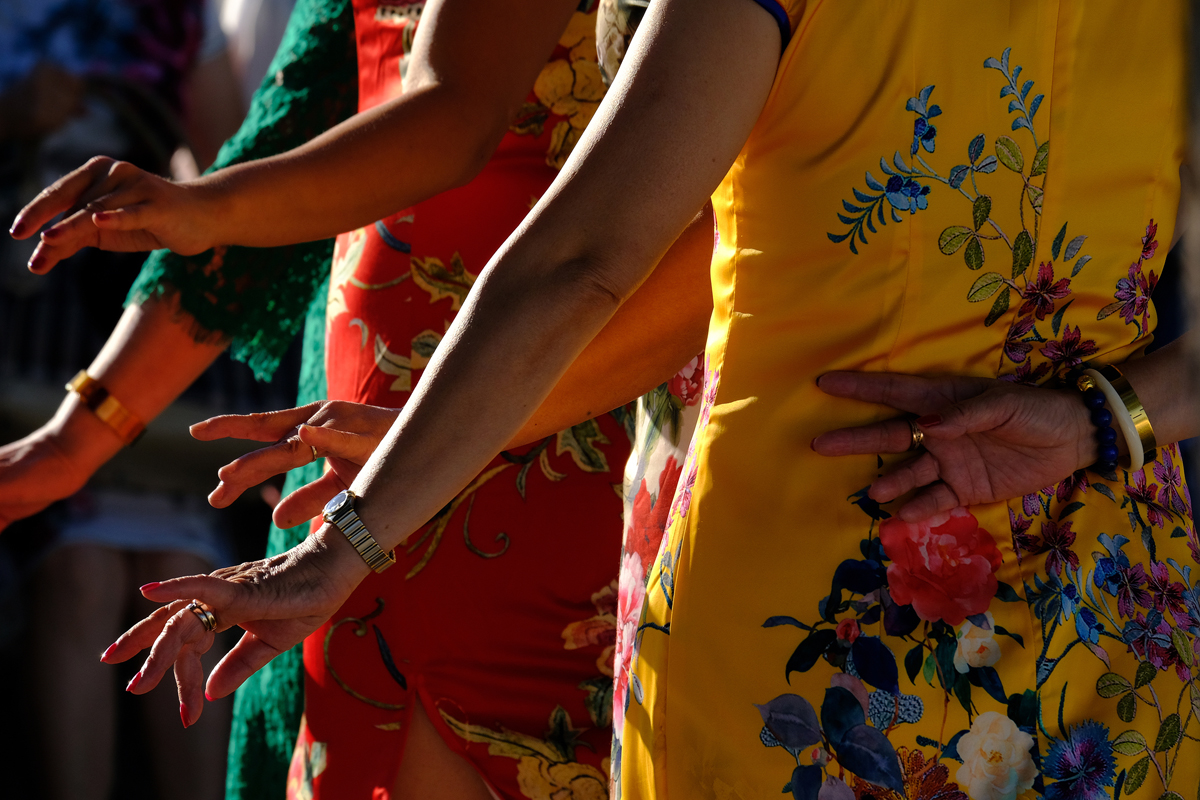

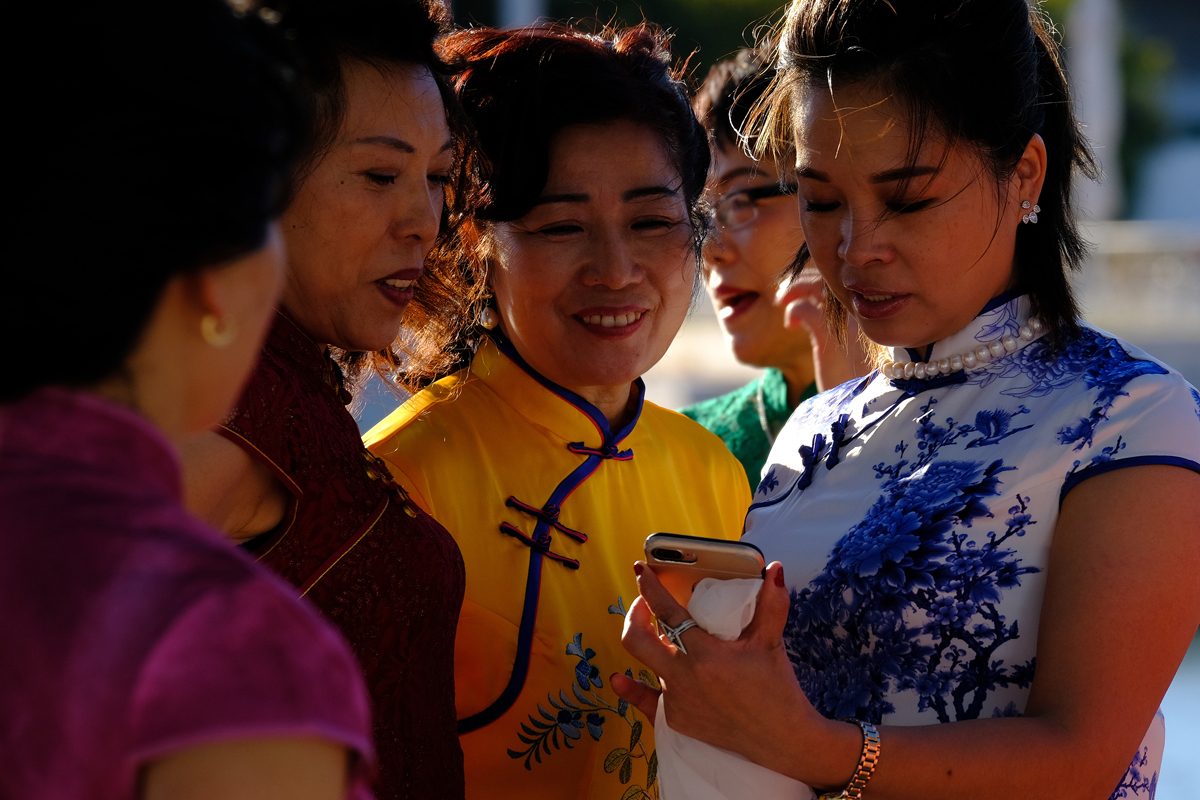
It was a great workshop with a fantastic group of clients. Everyone went home with some images they were proud of, and Hugo and myself had a lot of fun hosting people in this incredible city.
JOIN OUR FACEBOOK GROUP
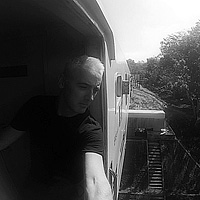
Andy Mumford is a Lisbon based landscape, travel and fine art photographer. A lover of nature and travel. Having made the transition from DSLR to Fuji X cameras, currently he is an official Fuji ambassador, a Fuji X Photographer.



